We use cookies to enhance our website for you. Proceed if you agree to this policy or learn more about it.
- Essay Database >
- Essay Examples >
- Essays Topics >
- Essay on Sugar

Energy Drinks Essay Examples
Type of paper: Essay
Topic: Sugar , Energy , Coffee , Alcohol , Caffeine , Teenagers , Alcoholism , Drinking
Words: 1500
Published: 02/07/2020
ORDER PAPER LIKE THIS
Introduction
A type of beverage consumed to get an instant mental and physical stimulation is referred to as energy drink. Some of the most popular drinks known to give wings to their consumers include Red Bull, Adrenaline Rush, Erektus, Venom and ISO Sprint. In the US, people in quest of quick gratification take to addiction of some form of energy boosters through coffee, tea and highly caffeinated energy drinks. Energy drinks are very popular among young and adults both; especially adolescents and young adults drink the energy beverages at a shocking rate. The easy availability of energy drinks in the market also contributes to its growing popularity and addiction. T. E. Sather states that the advertisement of energy drinks promises that the drinks "will give you a boost of energy"(T. E. Sather) and the energy is delivered through high dosage of concentrated caffeine and other additives. Energy drinks due to its high content of caffeine, sugar and other chemicals have many negative effects which make the need for a solution necessary.
Negative Effects
- The High Content of Caffeine Energy drinks contain a lot of stimulant drugs including caffeine, b vitamins, taurine, glucuronolactone, sugar, artificial sweeteners, inositol, l-carnitine, ginkgo biloba, inositol and ginseng. However, the most alarming is the amount of caffeine used in the drinks. The amount of caffeine used in the energy drinks far outweighs the amount found in tea, coffee and soft drinks like Coca-Cola. Many energy drinks have 2-3 times the amount of caffeine found in a cup of coffee. Sometimes the energy beverages contain more coffee than mentioned on the labels because many supplements such as kola nut, guaranà and yerba mate used in those beverages carry considerable amount of caffeine. Caffeine stimulates the central nervous system of our body and narrows the blood vessels passing through the heart and brain. It results in an increase in heart rate. Therefore, caffeine can lead to serious cardiovascular complications if caffeine infused drink is taken regularly. Caffeine also increases the rate of production of urine and hence drinking beverages that contain higher amount of caffeine can cause dehydration too. Too much caffeine can lead to insomnia, palpitations, tremors, sweating, nausea, vomiting, diarrhea, chest pains and neurologic symptoms, according to the American College of Emergency Physicians (Bill Radford). - Drink Mixing and Accidents Energy drinks are often used as drink mixers. It has turned into a fashion these days to mix energy drinks with alcoholic beverages to derive an extra stimuli. Dr. Yifrah Kaminer who is a professor of psychiatry and pediatrics has expressed his concern for spiking energy drinks with alcohol stating how this combination is likely to increase the number of alcohol-related injuries. Despite the punch of energy drinks, alcohol will still make the similar impact. So one who has drunk a combination of alcohol and energy drinks might feel that his senses are not numbed and he is alert but in reality he is as impaired as a drunk. So he might remain awake and try driving, but owing to drinking alcohol his motor skill will be impaired, increasing the chances of his making accidents. - Addiction in Youngsters Energy drinks are typically very popular among youngsters in the US with 66% of its consumers hovering between 13 - 35 years of age. Energy drinks are addictive especially for youngsters. The primary market of energy drinks is targeted at teens and college goers. They do not know how to moderately consume energy drink. A nutrition consultant and associate professor of biology at the University of Colorado, Jackie Berning states, "I'm appalled at the amount that these young adults are consumingI've seen them show up at an 8 o'clock class popping three Red Bulls so they could make it through the morning" (Bill Radford). The excessive amount of consumption of energy drinks causes high amount of caffeine in the body and the body gets accustomed to high caffeine levels, leading to addiction over time. If energy drinks are taken with alcohol then caffeine prevents the depressing effect of alcohol and allows a person to drink for a longer period of time. For this reason many young people drink alcohol with energy drinks. Since both alcohol and energy drinks are diuretic, the combined effect of them aggravates the state of dehydration. - Weight Gain Energy drinks are conducive to weight gain and obesity because of the excessive amount of sugar and artificial sweeteners used in them. Normal average person who fights to keep calorie count under check might pile on more weight due to the addiction of drinking energy beverages. Energy drinks may serve the same purpose of junk food in adding extra kilos. Most of the time people resort to energy drinks to combat sleep to remain awake through the night and such dose of high calorie content at the dead of night might boost up the weight gain. - Harmful for People with History of Health Problems Energy drinks could be quite detrimental for people with the health history of liver disease, diabetes, cardiovascular complications, seizures, hyperthyroidism, mood and behavioral disorders and renal disease. Though the caffeine content used in soft drinks is regulated by FDA, there is no such regulation on the use of caffeine in energy drinks. Therefore, the consumption of energy drinks may worsen the state of people with epilepsy and seizure history especially if they consume the drink in sleep deprived state. The high amount of sugar present in energy beverages may exacerbate the condition of people suffering from liver or renal disease and diabetes. - Harmful during Pregnancy Energy drinks are harmful for pregnant women. The main ingredients of any energy drink are augar, vitamin, A, C and E, caffeine, guarana, taurine, ginseng, creatine etc. Sugar is required during pregnancy and hence consumption of moderate quantity of sugar from energy drinks will cause no harm. However, energy drinks are not at all recommended for women going through gestational diabetes during pregnancy. Further, the intake of caffeine or guarana of more than 300 mg per day increases the chances of miscarriage significantly (Carolyn Roy-Bornstein). Any typical bottle of energy drink contains at least 200 mg of caffeine and because of the high caffeine content energy drinks should be avoided during pregnancy.
As of now, there are no age restriction or warning labels placed on energy drinks in the US due to which its side effects impact both young and adults. In the wake of some unfortunate incidents resulting in the death of some youngsters allegedly of energy drink consumption, countries like France and Germany have prohibited the sale of certain energy drinks like Red Bull and others. Some countries including Australia and New Zealand have imposed certain regulations on the manufacturing and sale of energy drinks. They have even restricted the amount of caffeine to be used in the energy beverages. Though the energy drink companies market their products as 'dietary supplements, over a time many reports have brought forth the side effects of consuming energy drinks. Therefore, I think in order to arrest the situation it is important to put restriction on its sale and manufacturing. The caffeine amount should be regulated by FDA. Warning labels, consumption guidelines and age limit of minimum 18 years should be placed on the drinks. Further, these caffeinated beverages should be moderated or banned from school vending machines and cafeterias to restrict consumption of caffeine by teenagers.
Energy drinks used as energy boosters by young and old have many side effects. High amount of caffeine used in energy drinks leads to a lot of many health complications. Mixing the drinks with alcohol compounds its side effects and increases the risk of accidents. These drinks being available in the all places with no age restriction has led to its addiction among children and adolescents. The high amount of sugar in these drinks contributes to weight gain. People with history of health problems might have their condition worsen due to drinking this type of beverage. It is also harmful for women during pregnancy. Taking into account the negative effects of the energy drinks it is the need of the hour to impose some restriction on the sale, manufacturing, caffeine content of the drinks. Also an age limit should be placed to keep teens and adolescents out of harm’s way.
Radford, Bill. Negative Energy? ; Drinks deliver caffeine jolt; just don't overdo, The Gazette, Dec 11, 2006. Freedom Newspapers Inc, Colorado Springs, Retrieved on 3rd June 2013 from <http://search.proquest.com/docview/268278579?accountid=1172> Roy-Bornstein, Carolyn. Just Say No to Energy Drinks, Pediatrics for Parents, Inc. Aug 2011. Retrieved on 3rd June 2013 from <http://search.proquest.com/docview/1017696040?accountid=1172> Sather, T E. The Dangers of Energy Drinks and Supplements, Feb 2013. Retrieved on 3rd June 2013 from <http://search.proquest.com/docview/1326330751?accountid=1172> Energy Drinks Busting Your Health for the Buzz, Pennsylvania Medical Society, September 2008. Retrieved on 3rd June 2013 from <http://newswise.com/articles/view/544512/>

Cite this page
Share with friends using:
Removal Request

Finished papers: 1454
This paper is created by writer with
ID 285254961
If you want your paper to be:
Well-researched, fact-checked, and accurate
Original, fresh, based on current data
Eloquently written and immaculately formatted
275 words = 1 page double-spaced

Get your papers done by pros!
Other Pages
Chemistry personal statements, sympathy case studies, steam case studies, butter case studies, nurture case studies, stem case studies, terminology case studies, infusion case studies, crunch case studies, guitar case studies, mirror case studies, music research paper sample, science and faith at odds essay example, research paper on assaults that were not just physical in nature instead cause of social and cultural, example of research summary article review, expanded definition of glycogen essay sample, work ethics critical thinking, good research paper about a study of the effect of aliens on culture, good example of research paper on hypertrophic cardiomyopathy, unconscious mind essay sample, child abuse essay, good example of research paper on life cycle assessment, vulnerable population essays examples, constructions of an enemy essays example, appiahs analysis essay sample, sweatshop essay sample, free essay about growing up online, pro fishing boats case study examples, the liverpool care pathway essay example, power and empowerment in nursing article review examples, good example of case study on aspects of contract and business law, good example of your road map for success by maxwell book review, good essay on abuse of prescription, relationship between contemporary theory and related classical theory course work, free research paper on flu vaccine controversy, lost of connectivity db unit 2 essays example, coco essays, polo ralph lauren essays, andra essays, beevor essays, charnley essays, biosynthetic essays.
Password recovery email has been sent to [email protected]
Use your new password to log in
You are not register!
By clicking Register, you agree to our Terms of Service and that you have read our Privacy Policy .
Now you can download documents directly to your device!
Check your email! An email with your password has already been sent to you! Now you can download documents directly to your device.
or Use the QR code to Save this Paper to Your Phone
The sample is NOT original!
Short on a deadline?
Don't waste time. Get help with 11% off using code - GETWOWED
No, thanks! I'm fine with missing my deadline
Energy Drinks
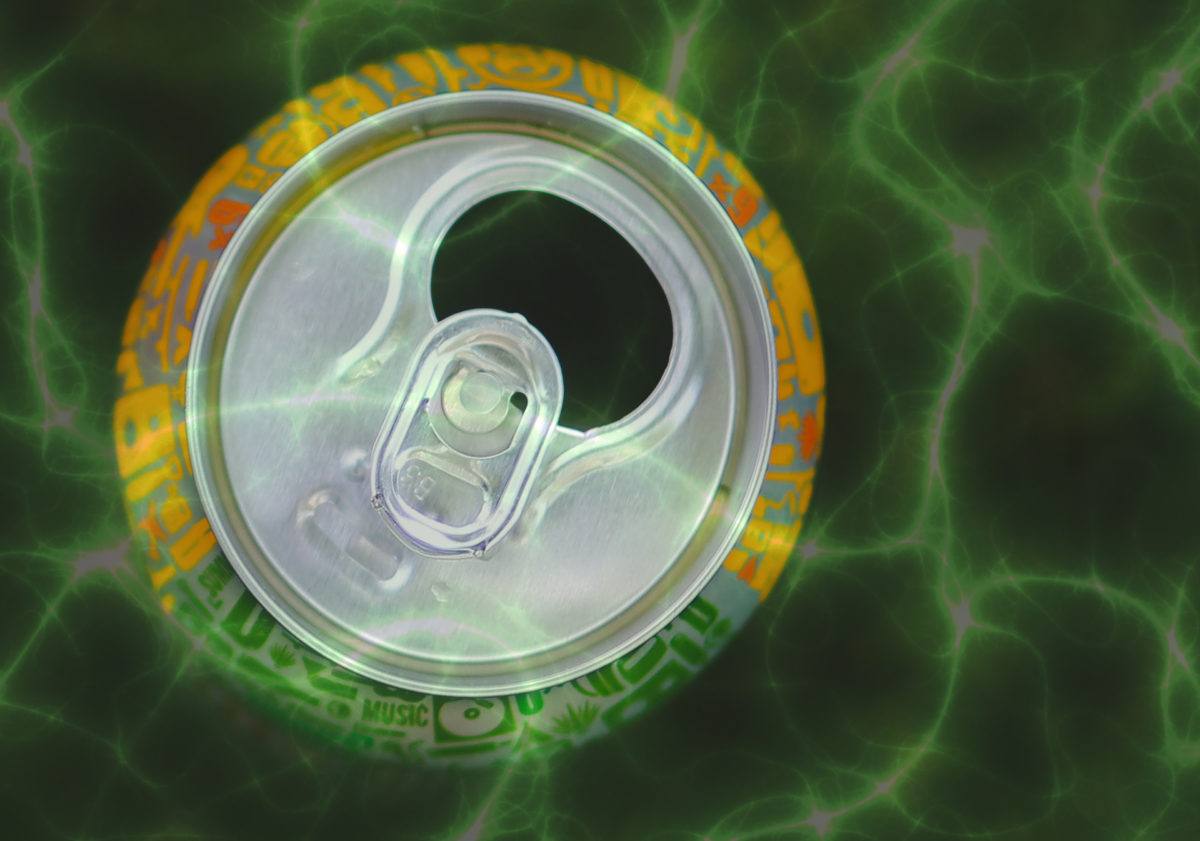
Plain water is the best hydrating beverage for most people, but sports and energy drinks are advertised to appeal to those who exercise or need a boost of energy to get through the day.
Though sometimes confused with sports beverages , energy drinks are a different product entirely. They are marketed to increase alertness and energy levels, containing significant amounts of caffeine and as much or more sugar as in soda. Many energy drinks pack about 200 mg of caffeine, the amount in two cups of brewed coffee. Other substances purported to increase energy may be added, like B vitamins and herbs such as ginseng and guarana. Most concerning is a lack of regulation about the safety of these drinks, as well as aggressive marketing tactics geared toward adolescents. [1] The Centers for Disease Control and Prevention reported that in 2007, 1,145 adolescents ages 12 to 17 went to the emergency room for an energy drink-related emergency. In 2011 that number climbed to 1,499. [2]
After water, sugar is the main ingredient in energy drinks. A nutritional comparison shows that a 12-ounce cola drink contains about 39 grams of sugar, 41 grams of sugar in an energy drink. Research has found that consuming high-sugar drinks of any kind can lead to weight gain and an increased risk of type 2 diabetes, cardiovascular disease, and gout.
Because of the amount of sugar and stimulant ingredients, there is concern that these beverages may not be helpful, and even worse, harmful to adolescents and people with certain health conditions.
Energy Drinks and Health
Sipping a beverage that offers quick energy may appeal to people who feel fatigued or who believe the caffeine can provide an edge when exercising or playing competitive sports. Although statements on the websites of energy drinks warn that these beverages may not be suitable for children, youth are among their largest consumers. An energy drink may be used by adolescents or college students cramming for exams through the night, or by a young athlete before an important game. While it is true that some controlled trials have shown temporary improved alertness and reversal of fatigue after taking energy drinks, as well as enhanced physical performance in young athletes, the majority of studies show an association with negative health effects. These include increased stress, aggressive behaviors like fighting, alcohol/cigarette abuse, increased blood pressure, increased risk of obesity and type 2 diabetes, poor sleep quality, and stomach irritation. [1]
A typical energy drink may contain the following: carbonated water, around 40 grams of sugar (from sucrose and/or glucose), 160 mg or more of caffeine, artificial sweetener , and herbs/substances associated with mental alertness and performance but that lack scientific evidence with controlled trials (taurine, panax ginseng root extract, L-carnitine, L-tartarate, guarana seed extract, B vitamins).
Special concerns with energy drinks:
- Amplified negative health effects in adolescents. Children and teens may experience heightened effects from the high amounts of caffeine, added sugars including high fructose corn syrup, low-calorie sweeteners , and herbal stimulants, partly due to their smaller body size. [3]
- Marketing tactics towards youth. Estimates show more than a 240% increase in U.S. and worldwide sales of energy drinks. It is a $21 billion industry, with marketing campaigns targeting youth and being sold in places that are easily accessed by this age group. [1,4] Youth are exposed to energy drink advertising on children’s websites, computer games, television, supermarkets, and sporting events. [5] Research has shown that adolescents lack maturity in key areas of the brain and are more likely to engage in risk-taking behavior, making them vulnerable to risky behaviors sometimes portrayed in energy drink marketing. Youth are attracted to energy drinks due to effective marketing, influence from peers, and lack of knowledge about their potential harmful effects. [4]
- Negative health outcomes. Emerging evidence has linked energy drink consumption with negative health consequences in youth like risk-seeking behaviors, poor mental health, adverse cardiovascular effects, and metabolic, renal, or dental problems. [1]
- Excessive caffeine. Too much caffeine from any beverage, particularly when several are taken in one day in sensitive individuals, can lead to anxiety, insomnia, heart problems like irregular heartbeat and elevated blood pressure, and in rare cases seizures or cardiac arrest. Some energy drinks may contain as much as 500 mg per can (the amount in 14 cans of cola). [4.6]
- High sugar content. Because of the excessive sugar content in some energy drinks, they carry the same health risks associated with other sugar-sweetened beverages. See Sugary Drinks .
- Dangers with alcohol. A greater danger is introduced if energy drinks are combined with alcohol, a trend largely seen in underage drinkers and associated with binge drinking. Studies suggest that drinking this type of cocktail leads to a greater alcohol intake than if just drinking alcohol alone. This may be because energy drinks increase alertness that masks the signs of inebriation, leading one to believe they can consume even more alcohol. [1] In case reports, high consumption of energy drinks—especially when mixed with alcohol—has been linked to adverse cardiovascular, psychological, and neurologic events, including fatal events. [2]
- Lack of regulation. The Food and Drug Administration (FDA) does not regulate energy drinks but enforces a caffeine limit of 71 mg per 12 ounces of soda; energy drinks typically contain about 120 mg per 12 ounces. However, energy drink manufacturers may choose to classify their product as a supplement to sidestep the caffeine limit. For companies that classify their energy drinks as beverages, the American Beverage Association published voluntary guidelines that advise accurate listings of caffeine content, restriction of marketing to children, and reporting of adverse events to the FDA. However, compliance to these guidelines has been found to be low. [1]
- The International Society of Sports Nutrition (ISSN) issued a position statement on energy drinks after analyzing their safety and efficacy. (8) They concluded that consuming energy drinks 10-60 minutes before exercise can improve mental focus, alertness, anaerobic performance, and endurance in adults, largely through the effects of caffeine. However, other ingredients in these drinks require more study to demonstrate their safety and effects on performance. ISSN cautioned that higher-calorie energy drinks can lead to weight gain, and that their high glycemic load could negatively affect blood glucose and insulin levels. They discouraged use of energy drinks for children and adolescents unless under careful parental monitoring, and for people with diabetes or cardiovascular disease who could be negatively affected by the stimulant ingredients.
- The American Academy of Pediatrics’ Committee on Nutrition and the Council on Sports Medicine and Fitness encourage pediatric health care providers to discourage the use of and discuss potential health risks of stimulant ingredients in energy drinks with youth and parents, and to limit or avoid sugar-sweetened beverages of any kind in youth due to risk of excessive calorie intake and weight gain, as well as dental erosion. [7]
Bottom Line
Water that is calorie-free and accessible without cost to most people is the beverage of choice taken with and between meals. Energy drinks are a source of caffeine that people may choose as an alternative to coffee or tea. However, they also contain high amounts of sugar, vitamins, and herbs that may not be necessary for the average person. Energy drinks can pose a health risk in vulnerable groups including children, teenagers, pregnant women, and those with medical conditions like diabetes and cardiovascular disease. Adults who choose to consume energy drinks should check the label for caffeine content and avoid high consumption (over 200 mg of caffeine per drink); consumption in combination with alcohol should be avoided. [9] Pediatricians should discuss the use of energy drinks with their young patients and parents to ensure that all are aware of the health risks, and if used, are monitored carefully. [7]
Sugary Drinks Sports Drinks
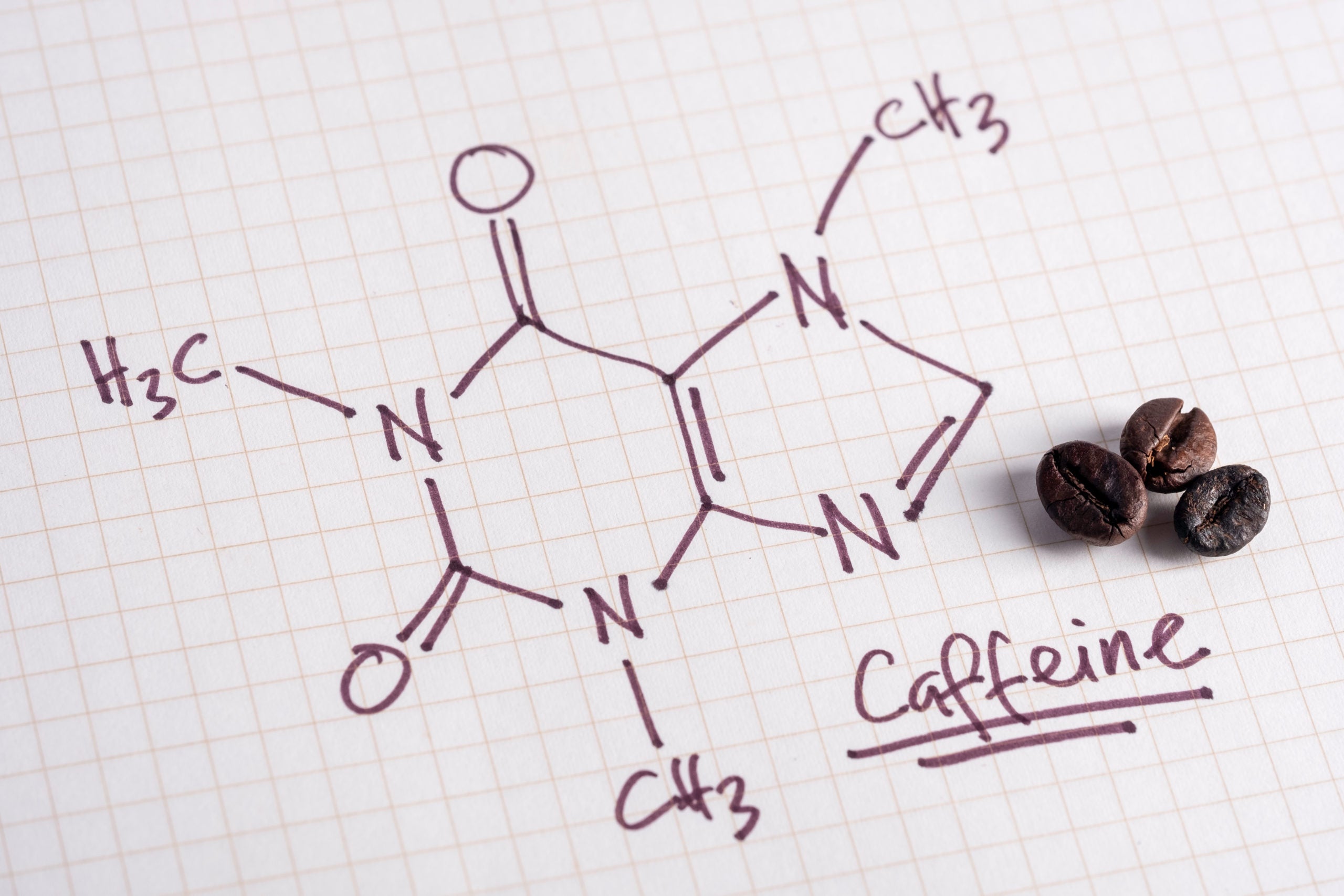
- Al-Shaar L, Vercammen K, Lu C, Richardson S, Tamez M, Mattei J. Health Effects and Public Health Concerns of Energy Drink Consumption in the United States: A Mini-Review. Front Public Health . 2017;5:225.
- Ehlers A, Marakis G, Lampen A, Hirsch-Ernst KI. Risk assessment of energy drinks with focus on cardiovascular parameters and energy drink consumption in Europe. Food and Chemical Toxicology . 2019 Aug 1;130:109-21.
- Centers for Disease Control and Prevention. The Buzz on Energy Drinks. https://www.cdc.gov/healthyschools/nutrition/energy.htm Accessed 8/21/19.
- Pound CM, Blair B; Canadian Paediatric Society, Nutrition and Gastroenterology Committee, Ottawa, Ontario. Energy and sports drinks in children and adolescents. Paediatr Child Health . 2017 Oct;22(7):406-410.
- De Sanctis V, Soliman N, Soliman AT, Elsedfy H, Di Maio S, El Kholy M, Fiscina B. Caffeinated energy drink consumption among adolescents and potential health consequences associated with their use: a significant public health hazard. Acta Biomed . 2017 Aug 23;88(2):222-231.
- Wiggers D, Asbridge M, Baskerville NB, Reid JL, Hammond D. Exposure to Caffeinated Energy Drink Marketing and Educational Messages among Youth and Young Adults in Canada. Int J Environ Res Public Health . 2019 Feb 21;16(4).
- Schneider MB, Benjamin HJ. Sports drinks and energy drinks for children and adolescents: Are they appropriate? Pediatrics . 2011;127(6):1182–9.
- Campbell B, Wilborn C, La Bounty P, Taylor L, Nelson MT, Greenwood M, Ziegenfuss TN, Lopez HL, Hoffman JR, Stout JR, Schmitz S, Collins R, Kalman DS, Antonio J, Kreider RB. International Society of Sports Nutrition position stand: energy drinks. J Int Soc Sports Nutr . 2013 Jan 3;10(1):1.
- van Dam RM, Hu FB, Willett WC. Coffee, Caffeine, and Health. NEJM . 2020 Jul 23; 383:369-378
Last reviewed July 2020
Terms of Use
The contents of this website are for educational purposes and are not intended to offer personal medical advice. You should seek the advice of your physician or other qualified health provider with any questions you may have regarding a medical condition. Never disregard professional medical advice or delay in seeking it because of something you have read on this website. The Nutrition Source does not recommend or endorse any products.
The Effects of Energy Drinks
An energy drink is a beverage comprising stimulating components, normally caffeine. These constituents serve as stimulants that can influence the body’s electrolyte balance by increasing the amount of fluid that comes out as sweat (Wassef et al., 2017). Other symptoms which may arise from consuming large quantities of caffeine include migraines, insomnia, anxiousness, irritability, restlessness, stomach discomfort, irregular heartbeat, and muscular tremor (Sara, 2020). Health problems associated with these drinks are much more severe in people with high blood pressure or heart conditions (Wassef et al., 2017). Health center visits attributable to caffeine’s excessive consumption are frequently accredited to dehydration, seizures, and extremely high blood pressure.
There are laws and regulations which govern the production, distribution, and consumption of food and other products. Industries making such products should therefore be strictly regulated because the high concentration of caffeine puts younger consumers at risk of intoxication. The hazards to people’s health keep increasing as the use of this substance in food and beverages continue rising, and because of such an exponential rise in usage, strict regulation should be considered.
Energy drink firms should not be permitted to sell these beverages to minors because they can cause heart abnormalities and seizures in children. About caffeine from natural sources, most of the stimulants comprise generic drug caffeine. These cumulative sources can cause increased heartbeat and a raise in blood pressure rate (Erdemir, 2016). During and after physical activity, one can still drink mineral water instead of sports drinks, which carry extra calories which lead to obesity and tooth decay. Children are a susceptible group that needs to be protected at all costs.
It should be illegal to sell these drinks to children under the age of sixteen years. It is because they are still young, and they would not be able to regulate consumption, thus resulting in addiction. Furthermore, due to their tender age, the risks are high, and, therefore, relevant authorities should impose an age ban on these products to sixteen years and below.
These drinks should have a warning label and should sensitize and educate people on the risks associated with excessive consumption of such beverages. It should be done in good faith, as it will help save many people from diseases and other health complications. By doing so, the companies would be in a position where they can absolve themselves from any blame should anything go wrong.
Erdemir, U. (2016). Effects of energy and sports drinks on tooth structures and restorative materials. World Journal of Stomatology , 5 (1), 1. Web.
Sara, C. (2020). The cardiovascular effects of energy drinks. Clinical Cardiology and Cardiovascular Interventions , 3 (1), 1-5. Web.
Wassef, B., Kohansieh, M., & Makaryus, A. (2017). Effects of energy drinks on the cardiovascular system. World Journal of Cardiology , 9 (11), 796-806. Web.
Cite this paper
- Chicago (N-B)
- Chicago (A-D)
StudyCorgi. (2022, March 3). The Effects of Energy Drinks. https://studycorgi.com/the-effects-of-energy-drinks/
"The Effects of Energy Drinks." StudyCorgi , 3 Mar. 2022, studycorgi.com/the-effects-of-energy-drinks/.
StudyCorgi . (2022) 'The Effects of Energy Drinks'. 3 March.
1. StudyCorgi . "The Effects of Energy Drinks." March 3, 2022. https://studycorgi.com/the-effects-of-energy-drinks/.
Bibliography
StudyCorgi . "The Effects of Energy Drinks." March 3, 2022. https://studycorgi.com/the-effects-of-energy-drinks/.
StudyCorgi . 2022. "The Effects of Energy Drinks." March 3, 2022. https://studycorgi.com/the-effects-of-energy-drinks/.
This paper, “The Effects of Energy Drinks”, was written and voluntary submitted to our free essay database by a straight-A student. Please ensure you properly reference the paper if you're using it to write your assignment.
Before publication, the StudyCorgi editorial team proofread and checked the paper to make sure it meets the highest standards in terms of grammar, punctuation, style, fact accuracy, copyright issues, and inclusive language. Last updated: March 3, 2022 .
If you are the author of this paper and no longer wish to have it published on StudyCorgi, request the removal . Please use the “ Donate your paper ” form to submit an essay.
Teens Are Probably Drinking Too Much Caffeine
Products like Red Bull have sent thousands of adolescents to the emergency room. The people who market them insist they don’t need to be regulated.

Earlier this year, a half-dozen students from City Hill Middle School, in Naugatuck, Connecticut, traveled with their science teacher, Katrina Spina, to the state capital to testify in support of a bill that would ban sales of energy drinks to children under the age of 16. Having devoted three months to a chemistry unit studying the ingredients in and potential health impacts of common energy drinks—with brand names like Red Bull, Monster Energy, and Rockstar—the students came to a sobering conclusion: “Energy drinks can be fatal to everyone, but especially to adolescents,” a seventh grader, Luke Deitelbaum, told state legislators. “Even though this is true, most energy-drink companies continue to market these drinks specifically toward teens.”
A 2018 report found that more than 40 percent of American teens surveyed had consumed an energy drink within the past three months. Another survey found that 28 percent of adolescents in the European Union had consumed these sorts of beverages in the past three days.
This popularity is in marked contrast to the recommendations of groups like the American Academy of Pediatrics and the American College of Sports Medicine , who say youth should forgo these products entirely. These recommendations are based on concerns about health problems that, although rare, can occur after consumption, including seizures, delirium, rapid heart rate, stroke, and even sudden death. A U.S. government report found that from 2007 to 2011, the number of emergency-department visits involving energy drinks more than doubled, to nearly 21,000.
Of these, approximately 1,500 were children ages 12 to 17, although the number of visits from this age group increased only slightly over the four years.
For their part, energy-drink manufacturers argue that they are being unfairly targeted. At the Connecticut hearing, the head of public affairs for Red Bull North America, Joseph Luppino, maintained that there is no scientific justification to regulate energy drinks differently than other caffeine-containing beverages such as soda, coffee, and tea—particularly when some coffeehouses serve coffee with a caffeine content exceeding that of a can of Red Bull. “Age-gating is an incredibly powerful tool,” Luppino said, and should be reserved for “inherently dangerous products” like nicotine.
The showdown in Connecticut, which pitted the City Hill students against a growing $55-billion-a-year global industry, was the latest in an ongoing debate about the safety and regulation of energy drinks. In recent years, countries such as the United Kingdom and Norway have considered banning sales to young people, while Lithuania and Latvia have active bans in place. In the United States, along with Connecticut, state legislators in Maryland, Illinois, and Indiana have introduced bills, though none have been signed into law. A South Carolina bill to ban sales to kids under 18—and to fine those caught selling the drinks to minors— advanced through the legislature in April, and is now pending before the state’s full medical-affairs committee. It is supported by the parents of a 16-year-old who died from a caffeine-induced cardiac event after consuming a coffee, a soda, and an energy drink within a period of two hours.
Read: How much caffeine before I end up in the E.R.?
As the regulatory status of energy drinks continues to be debated, a growing number of consumers and public-health advocates are asking why and how a product loaded with caffeine and other stimulants became so popular among young people. The reasons are a mix of lax regulation, the use of caffeine as a sports-performance enhancer among adults, and a bit of scientific uncertainty.
According to the sports cardiologist John Higgins , a professor at McGovern Medical School at UTHealth in Houston, there is also another factor: “very, very intelligent advertising.”
Historically, government agencies such as the U.S. Food and Drug Administration have struggled to regulate beverages with added caffeine. Though it offers some guidance , the FDA allows manufacturers of liquid products to decide on their own whether to market their products as dietary supplements or as conventional foods and beverages, which carry differing regulatory requirements. All three major energy-drink makers now have most of their products regulated as foods rather than dietary supplements—though that wasn’t always the case.
Researchers from the Johns Hopkins School of Medicine, in a 2008 review published in the journal Drug and Alcohol Dependence , note that that lack of consistency is partly due to our long love affair with drinks in which caffeine is naturally occurring, including coffee and tea. In 1980, citing health concerns, the FDA proposed to eliminate caffeine from soft drinks, which are regulated as foods. The manufacturers, however, claimed the caffeine was a flavor enhancer. The FDA approved caffeine, but limited the maximum content of cola-type soft drinks to .02 percent, or roughly 71 milligrams per 12-ounce serving.
“If caffeine had not been accepted as a flavor enhancer, but had been regarded as a psychoactive ingredient,” write the Johns Hopkins researchers, “soft drinks might have been regulated by the FDA as drugs”—which are subject to additional regulations.
When energy drinks first appeared on the American market in the late 1990s and early 2000s, some manufacturers claimed the products were neither drugs nor conventional foods, but dietary supplements. Drugs with caffeine require warning labels, but dietary supplements don’t. “It is a striking inconsistency that, in the U.S. an [over-the-counter] stimulant medication containing 100 mg of caffeine per tablet (e.g. NoDoz) must include [a series of] warnings,” write the Johns Hopkins researchers, “whereas a 500 mg energy drink can be marketed with no such warnings and no information on caffeine dose amount in the product.”
As early as 2009, sports and medical organizations began issuing position statements discouraging energy-drink consumption by young people. In 2011, the American Academy of Pediatrics concluded that energy drinks “are not appropriate for children and adolescents, and should never be consumed.” Further, the group warned that adolescents might mistakenly use energy drinks, rather than sports drinks like Gatorade, for rehydration during physical activity. “Advertisements that target young people are contributing to the confusion,” wrote the authors.
Two years later, in 2013, questions about safety and marketing came to a head in the halls of Congress. Three Democratic senators launched an investigation into the marketing practices of energy-drink companies. They found that adolescents between the ages of 13 and 17 are frequent targets of energy-drink marketing, and stated in a written report that “this population is also at risk for the detrimental impacts of energy-drink consumption.” The report also noted a range of claims not evaluated or substantiated by the FDA. For example, the makers of AMP Energy marketed the drinks as helping to “energize and hydrate the body,” while advertisements for Red Bull promised “increased concentration and reaction speed.”
(As it happens, a few months before the senate hearing, Monster Beverage Corporation and Rockstar announced their intention to follow in the footsteps of Red Bull by declaring their products to be foods, rather than dietary supplements.)
Among those providing testimony at a committee hearing was Jennifer L. Harris, a researcher at the Rudd Center for Food Policy and Obesity, currently housed at the University of Connecticut. She and her team had conducted an earlier study of how sugary beverages are marketed to children. “What we learned about energy drinks stunned us,” she said at the hearing .
Energy-drink companies had been pioneers in using social media to market their products, said Harris. At the time of her study, Red Bull and Monster Energy were the fifth and 12th most popular brands on Facebook—a platform that was, at the time, particularly popular among college students and adolescents. Further, said Harris, “energy-drink brands often promote teen athletes and musicians and sponsor local events, where they provide free samples, including to minors.” The marketing is effective, she noted. Sales of most other beverage categories were declining, but energy-drink sales had increased by 19 percent the previous year, reaching $8 billion in 2012.
The energy-beverage industry vigorously defended its products and marketing practices. In his congressional statement, Rodney Sacks, the CEO of Monster Beverage, noted that a 16-ounce can of Monster Energy contains 160 mg of caffeine. In contrast, the equivalent amount of Starbucks coffee contains 330 mg—more than twice as much. Further, Monster cans include a label recommending against consumption by children. (According to guidelines put forth by the American Beverage Association, a trade group, energy drinks should not be marketed to children under 12, and other leading brands such as Red Bull and Rockstar carry similar labels recommending against consumption by children.)
Further, Sacks and representatives from Rockstar and Red Bull North America denied that their companies advertise to young teenagers. Doing this, said Sacks, “would undermine the credibility of the brand image in the eyes of young adults,”—nominally their target consumer demographic.
Not everyone buys this. A 2017 study published in the journal Public Health Nutrition , for example, tested whether young consumers perceived energy-drink advertising as being targeted at people their age and younger. Researchers at the University of Waterloo randomly assigned over 2,000 Canadians ages 12 to 24 to view one of four online ads for Red Bull. Among the youngest subjects—those ages 12 to 14—nearly 72 percent of participants who viewed an advertisement featuring the company’s sponsorship of the X Games, an extreme-sports event, perceived the ad to be targeted to people their age and younger.
The University of Waterloo researchers compare energy-drink marketing practices with those of 20th-century cigarette companies. “While tobacco advertising was ostensibly targeted only at adults,” they write, “it nevertheless achieved very high levels of reach and appeal among young people.”
Read: Juul’s new marketing is straight out of Big Tobacco’s playbook
Further, and perhaps not surprisingly, across all age groups, 71 percent of those who were shown a Red Bull ad with a sports theme—the X Games, for example, or an image of an airborne snowboarder with accompanying text reading “RED BULL GIVES YOU WIIINGS”—thought the ad they viewed promoted the use of energy drinks during sports.
This is a problem, says Matt Fedoruk, the chief science officer at the U.S. Anti-Doping Agency (USADA). Though his organization is perhaps best-known for its role in testing Olympic athletes for banned substances, it also promotes a positive youth-sports culture. Fedoruk says it fields questions about energy drinks from athletes of all ages.
“Caffeine is the most studied ergogenic aid on the planet,” says Fedoruk, and its use is widespread among elite athletes. Research has even produced recommended guidelines for ingestion prior to exercise. But these guidelines were developed for adults. Young people who try to follow them could quickly surpass the American Academy of Pediatrics’ guidelines for adolescents: no more than 100 mg of caffeine per day, or roughly the amount in a typical cup of coffee. Further, because energy drinks are manufactured in adult serving sizes, says Fedoruk, it’s easy for a child to get too much. “Depending on the product you choose, you could definitely be dosing your young child or youth athlete in doses that far exceed what may be safe for their body weight and size.”
When it comes to youth athletes, “our experts recommend both water and sports drinks as the best options for hydration,” writes Danielle Eurich, a USADA spokesperson. Athletes exercising less than an hour probably don’t even need sports drinks, she adds. “Water would be best.”
Last year, John Higgins, the sports cardiologist, ran a small study in which healthy medical students downed a 24-ounce can of Monster Energy. Ninety minutes later, the students’ arteries were measured to test their ability to bounce back—or dilate—after being compressed by a blood-pressure cuff. Dilation helps control blood flow, increasing circulation when necessary, including during exercise. In this study, the medical students’ blood flow was “significantly and adversely affected,” says Higgins.
Higgins suspects that the combination of ingredients—the caffeine and other stimulants such as guarana, taurine, and L-carnitine, along with added vitamins and minerals—interferes with the endothelium, a thin layer of cells that control dilation. But he can’t say for certain because there hasn’t been enough research. Higgins’s own study was preliminary and lacked a control group. Further, a recent review by a group of Harvard researchers noted considerable limitations to the existing energy-drink literature. Most studies, the authors found, used small sample sizes or employed a cross-sectional design, which isn’t able to determine causation. Large longitudinal studies, meanwhile, require time and money.
Higgins says the main reason there is no evidence of safety is that energy drinks are not classified by most countries as drugs. “They are classified as supplements, additives, or whatever.” Until more data are available, Higgins’s opinion is that energy drinks should be avoided before, during, and after exercise. Anyone under 18 should avoid them entirely, he says. This recommendation has been endorsed by the American College of Sports Medicine.
Yet at the Connecticut hearing, Red Bull’s Joseph Luppino insisted that there is ample evidence of safety. He referenced the European Food Safety Authority, which conducts food-chain risk assessments for the European Union: “They have unequivocally concluded there are no synergistic effects between the various ingredients that are contained in energy drinks.”
When asked for a comment, the European agency pointed to its 2015 report , and a spokesperson explained the findings: In general, the combination of substances typically found in energy drinks “would not affect the safety of single doses of caffeine up to 200 mg.” Individuals who might drink a 16-ounce can of Rockstar or a 24-ounce can of Monster containing 240 mg of caffeine plus other stimulants were not considered by the analysis. The EU agency spokesperson also issued a caveat: There weren’t enough data to determine whether other common energy-drink ingredients like guarana and taurine influence the acute effects of caffeine on blood pressure.
Monster and Rockstar did not respond to repeated requests for comment. When asked about the discrepancy between Luppino’s characterization of the European report and the agency’s own characterization of its findings, Erin Mand, a spokesperson for Red Bull, pointed to particular passages in the report that suggest the safety of particular ingredient combinations up to 200 mg of caffeine. She additionally noted that “its single-serving products fall under 200 mg of caffeine.”
The American Beverage Association also did not respond to specific interview questions, but did provide this statement: “Energy drinks have been enjoyed by millions of people around the world for more than 30 years, and are recognized by government health agencies worldwide as safe for consumption. The amount of caffeine in energy drinks is typically half the amount found in a coffeehouse coffee and is no different from the caffeine found in other foods and beverages. Further, America’s mainstream energy drink companies have taken voluntary steps to ensure their products are not marketed to children.”
In the spring of 2017, Gary Watts, the coroner for South Carolina’s Richland County, released the autopsy results for Davis Cripe, the teenager whose death spurred the state’s bill to ban sales of energy drinks to minors. The cause of death: a caffeine-induced cardiac event causing a probable arrhythmia. “Typically you don’t see the results of an arrhythmia in an actual autopsy because there’s no real damage to the heart,” Watts says.
After Cripe collapsed at school, a staff member who had previously worked as a nurse in a cardiac unit diagnosed a cardiac arrhythmia.
“Who’s to say that this hasn’t happened before?” says Watts, whose office has performed autopsies on other young adults who died of sudden death. “It probably has—it’s just that we’ve not been able to document [the cause] with someone on the scene at the time who says, ‘Okay, this is an arrhythmia.’” Watts believes there are too many uncertainties about energy drinks to say that they are safe for adolescents. “I’m not trying to get rid of energy drinks,” he says. “I know a lot of people use them. But I do think that the age is a concern that everybody needs to be really serious about.”
As for the Connecticut bill, it has not moved out of committee, but in mid-May, the City Hill Middle School students and their teacher returned to the state capital to lobby lawmakers. They shared informational brochures created by the students, as well as informal results from a survey of students and parents, indicating widespread support for their bill among the latter. In the meantime, the students say, their siblings and peers continue to consume energy drinks—on soccer fields, in dugouts, and in front of video-game consoles.
“It’s so interesting,” a City Hill student, Emily Fine, said of energy-drink makers and their products, “how they still put them on the market.”
An official website of the United States government
The .gov means it’s official. Federal government websites often end in .gov or .mil. Before sharing sensitive information, make sure you’re on a federal government site.
The site is secure. The https:// ensures that you are connecting to the official website and that any information you provide is encrypted and transmitted securely.
- Publications
- Account settings
Preview improvements coming to the PMC website in October 2024. Learn More or Try it out now .
- Advanced Search
- Journal List
- Mayo Clin Proc
- v.85(11); 2010 Nov
Energy Beverages: Content and Safety
Exercise is making a resurgence in many countries, given its benefits for fitness as well as prevention of obesity. This trend has spawned many supplements that purport to aid performance, muscle growth, and recovery. Initially, sports drinks were developed to provide electrolyte and carbohydrate replacement. Subsequently, energy beverages (EBs) containing stimulants and additives have appeared in most gyms and grocery stores and are being used increasingly by “weekend warriors” and those seeking an edge in an endurance event. Long-term exposure to the various components of EBs may result in significant alterations in the cardiovascular system, and the safety of EBs has not been fully established. For this review, we searched the MEDLINE and EMBASE databases from 1976 through May 2010, using the following keywords: energy beverage , energy drink , power drink , exercise , caffeine , red bull , bitter orange , glucose , ginseng , guarana , and taurine . Evidence regarding the effects of EBs is summarized, and practical recommendations are made to help in answering the patient who asks, “Is it safe for me to drink an energy beverage when I exercise?”
EB = energy beverage; ECG = electrocardiogram; SD = sport drink
Red Bull was introduced in Austria in 1987 and in the United States in 1997. Since then, the energy beverage (EB) market has grown exponentially. 1 Hundreds of different brands are now marketed, with caffeine content ranging from a modest 50 mg to an alarming 505 mg per can or bottle. 2 In the United States, Red Bull enjoyed a 65% share of the $650-million energy/power drink market in 2005, and its sales are growing at about 35% per year. 3 The United States is the world's largest consumer of EBs by volume, roughly 290 million gallons in 2007, or 3.8 qt per person per year. 2 Consumption of EBs is most common among those aged 11 to 35 years, and 24% to 57% of this age group reported that they drank an EB within the past few months. 4
Regulation of EBs, including content labeling and health warnings, differs across countries, with some of the laxest requirements existing in the United States. 2 For instance, no EBs are banned in the United States, and EB companies can say whatever they want regarding energy and performance effects. This is in stark contrast to countries in which some EBs have been banned, and companies are not allowed to outline the performance effects that their products may or may not provide. 4 This absence of oversight has resulted in aggressive marketing of EBs, targeted primarily toward young men and openly promoting psychoactive, performance-enhancing, and stimulatory effects. 1 , 4
Alarmingly, EB consumption has been shown to be positively associated with high-risk behavior, including marijuana use, sexual risk taking, fighting, failure to use seat belts, and taking risks on a dare, as well as with smoking, drinking, problems stemming from alcohol abuse, and illicit drug use. 5 , 6
In an era in which Gatorade and Powerade, termed sport drinks (SDs) for the purposes of this article, have paved the way as optimal hydration fluids that boast superiority to water, uncertainty is growing with regard to where EBs fit and how they are consumed. 7 Convenience stores now display EBs next to the SDs, which can mislead the consumer into thinking that they are similar products. Whereas SDs can indeed provide hydration and replenishment of electrolytes and carbohydrates, the elevated levels of caffeine in EBs have diuretic effects, more pronounced in the first-time user, that increase urinary output and natriuresis. 8 Additionally, EBs may have thermogenic effects. 9 Moreover, EBs supply an amount of carbohydrate far beyond that recommended for physically active people, which can slow the rate at which fluid is absorbed into the bloodstream or lead to gastrointestinal distress. 10 Finally, the effects due to the interaction of substances on which little research has been done (eg, glucuronolactone) are not well understood.
This review of EBs describes the various ingredients, discusses their safety, and provides recommendations regarding their use. Although most research studies and observational data have come from athletics, our research query included studies and information involving nonathlete consumers. Also, the review differentiates between these populations and offers recommendations specific to each group.
A search of the English-language scientific literature was performed primarily by searching the MEDLINE and EMBASE databases and using the Google Internet search engine for the period January 1976 through May 2010. For this search, we used keywords found in lead peer-reviewed articles and research outlining the current body of knowledge on EBs. Keywords used in the search are energy beverage, energy drink, power drink, exercise, caffeine, red bull, bitter orange, glucose, ginseng, guarana , and taurine . The bibliographies of articles were searched for relevant articles; links on Web sites containing published articles were searched for pertinent information. This review endeavored to bring the most pertinent research to light in order to present real-world recommendations to both the athletic community and the general population.
INGREDIENTS OF EBs
The most common ingredient in EBs is caffeine, which is often combined with taurine, glucuronolactone, guarana, and B vitamins to form what manufacturers have called an “energy blend.” 1 When higher doses of caffeine are combined with these other substances currently blended in EBs, the subsequent effect cannot always be predicted; adverse effects have been reported, including cardiac arrest. 11 , 12 The components of the 4 best-selling EBs are given in Table 1 , and the specific ingredients are subsequently discussed in more detail.
Comparison of Ingredients in Energy Beverages a

Well-performed research indicates that some of these substances are important for proper body function, but this does not mean that a person has a deficiency. Moreover, important questions regarding overall intake and subsequent adverse effects should come to mind as the reader progresses through this review. We have also included information on the bioavailability of each substance if the necessary research has been completed.
Caffeine, an adenosine receptor antagonist, is a stimulant that can influence the activity of neuronal control pathways in the central and peripheral nervous systems. 13 It is the most common stimulant in EBs, with most EBs containing between 70 and 200 mg of caffeine per 16-oz serving. In comparison, an 8-oz cup of coffee contains 110 to 150 mg for drip, 65 to 125 mg for percolated, and 40 to 80 mg for instant; caffeinated beverages contain about 50 to 100 mg of caffeine. 14 Caffeine is known as an ergogenic compound that raises the heart rate and blood pressure. Adverse effects typically manifest with ingestion higher than 200 mg of caffeine and include insomnia, nervousness, headache, tachycardia, arrhythmia, and nausea. 14 , 15 The ergogenic effects of caffeine on athletic performance have been shown, and its broad range of metabolic, hormonal, and physiologic effects has been described. 16 , 17 Caffeine has been shown to be an effective ergogenic aid for endurance athletes when ingested before and/or during exercise in moderate quantities (3-6 mg/kg of body mass); abstaining from caffeine for at least 7 days before use will optimize the effect. 16 Of note, caffeine appears on the list of substances banned by the International Olympic Committee. 18 Of all the compounds analyzed in this review, caffeine is by far the most-researched in the literature. 16
The absolute bioavailability of orally administered caffeine was investigated in 10 healthy adult male volunteers aged 19 to 30 years. 19 Participants received a 5-mg/kg dose of caffeine as either an aqueous oral solution or an intravenous infusion on separate occasions about 1 week apart in a randomized crossover fashion. Plasma samples were collected during the 24-hour period after each dose and assayed for their caffeine content using a high-performance liquid chromatographic technique. The oral absorption was very rapid, with caffeine reaching a peak plasma concentration after 29.8 minutes, and the variation in the maximum plasma concentration was low at 10.0 μg/mL. The absolute bioavailability was assessed by comparing the areas under the plasma concentration vs time curves for the intravenous and oral doses of caffeine. The rapid absorption resulted in essentially complete bioavailability of the oral caffeine, with a plasma half-life varying from 2.7 to 9.9 hours, indicating substantial variability in its elimination between participants. 19
Caffeine mobilizes fat stores and stimulates working muscles to use fat as a fuel, which delays depletion of muscle glycogen and allows for prolonged exercise. 20 The critical period in glycogen sparing appears to occur during the first 15 minutes of exercise, when caffeine has been shown to decrease glycogen utilization by as much as 50%. Thus, glycogen saved at the beginning is available during the later stages of exercise. Although the exact mechanism is still unclear, caffeine caused sparing in all the human studies in which muscle glycogen levels were measured. The effect on performance, which was observed in most experimental studies, was that participants were able to exercise longer before exhaustion occurred. 20
Caffeine binds to the adenosine class of G protein–coupled receptors on the surface of heart muscle cells, which begins a second messenger system with cyclic adenosine monophosphate inside the cells and mimics the effects of epinephrine. 21 The rate of glycolysis increases, which increases the amount of adenosine triphosphate available for muscle contraction and relaxation. 22 This can result in a positive inotropy and chronotropy, ie, a stronger and faster heartbeat. Caffeine immediately increases blood pressure and peripheral vascular resistance, in part because of sympathetic stimulation. One group of investigators showed a significant effect of drinking caffeinated coffee on arterial tone and function, suggesting that caffeine immediately increases arterial stiffness, with the effect being more pronounced on aortic systolic and diastolic blood pressures than on the brachial artery. 23
The discussion on caffeine and hydration continues to evolve. A number of studies have examined the effects of ingesting a large dose of caffeine and found that urine output was increased. 24 Yet, the long-held conclusion that caffeine increases 24-hour urine output has been challenged, because most of the studies that established this conclusion involved persons who refrained from caffeine consumption before the analysis. 25 , 26 The human body develops a tolerance to caffeine quickly, usually 3 to 5 days after regular use, and when this happens, it noticeably weakens the already limited diuretic effect of caffeine. 26 , 27 Moreover, the human kidneys are masters at ensuring that proper homeostatic conditions are maintained. Recent research now leans toward the ability of the body to maintain proper water levels and overcome the mild diuretic effects of caffeine in long-term users. 25 , 28
As the rest of the ingredients are reviewed herein, please note that in comparison with caffeine, each has had far fewer research studies performed.
Taurine, a sulfur-containing amino acid, is the most abundant intracellular amino acid in humans and a normal constituent of the human diet. 29
A study of the pharmacokinetics of taurine was conducted in 8 healthy male volunteers with a median age of 28 years. After oral administration of 4 g of taurine in the fasting state, blood samples were taken at regular intervals, and plasma taurine concentration was measured by a modified high-performance liquid chromatographic technique. Maximum plasma taurine concentration was 86 mg/L 1.5 hours after administration. Plasma elimination half-life and the ratio of clearance to bioavailability were 1.0 hour and 21 L/h, respectively. 30
Taurine modulates skeletal muscle contractile function and may attenuate exercise-induced DNA damage, with some evidence showing the ability to improve exercise capacity and performance; however, this has not been definitively demonstrated. 4 Taurine has numerous other biological and physiologic functions, including bile acid conjugation and cholestasis prevention; antiarrhythmic, inotropic, and chronotropic effects; central nervous system neuromodulation; retinal development and function; endocrine or metabolic effects; and antioxidant and anti-inflammatory properties. 31 Taurine also assists in cell membrane stabilization, osmoregulation, and detoxification. 32 However, the amounts of taurine found in popular EBs are far below the amounts expected to deliver either therapeutic benefits or adverse events. 14
Glucuronolactone
This is a naturally occurring substance produced in small amounts within the body. Supplementation with D-glucarates, including glucuronolactone, may favor the body's natural defense mechanism for eliminating carcinogens and tumor promoters and their effects. 33 Toxicokinetic data on glucuronolactone in rats, which show bioavailability and lack of accumulation, with peak plasma levels 1 to 2 hours after oral administration, are in accordance with the limited human data. 34 Unfortunately, little research has been done in humans, and the current body of knowledge on this substance is scant. Therefore, conclusions on whether this compound is harmful or beneficial cannot be made.
The B vitamins are water-soluble vitamins required as coenzymes for proper cell function, especially mitochondrial function and energy production. 35 B vitamins include thiamine, riboflavin, niacin, pantothenic acid, pyridoxine hydrochloride, biotin, inositol, and cyanocobalamin. Because EBs contain large amounts of sugar, these vitamins are touted as ingredients necessary to convert the added sugar to energy. Hence, the B vitamins are the “key” needed to unlock all the energy provided by the simple sugars in EBs, and this is the extra energy that EB companies claim their product can provide. An expansive amount of research has been done on the B vitamins, and we outline the specific functions each major B vitamin plays in the human body.
Thiamine (vitamin B 1 ) is essential for the oxidative decarboxylation of the multienzyme branched-chain α-keto acid dehydrogenase complexes of the citric acid cycle and thus serves as a coenzyme precursor of some key enzymes of carbohydrate metabolism. 36 Riboflavin (vitamin B 2 ) is required for the flavoenzymes of the respiratory chain and thus also supports energy metabolism involving fats, carbohydrates, and proteins. 37
The reduced form of nicotinamide adenine dinucleotide (NADH) is synthesized from niacin (vitamin B 3 ). This coenzyme is required to supply protons for oxidative phosphorylation and plays a major part in energy production in cells. 38 It also stimulates the production of such neurotransmitters as l -dopa, dopamine, serotonin, and norepinephrine.
Pantothenic acid (vitamin B 5 ) is required for coenzyme A, α-ketoglutarate, and pyruvate dehydrogenase formation, as well as fatty acid oxidation. 35
Pyridoxine hydrochloride (vitamin B 6 ) is a coenzyme involved in amino acid and homocysteine metabolism, glucose and lipid metabolism, neurotransmitter production, and DNA and RNA synthesis. 39 Specifically, pyridoxine hydrochloride is involved in protein and red blood cell metabolism, is important for immune system function, and is needed to convert tryptophan to niacin.
Biotin (vitamin B 7 ) is the coenzyme of decarboxylases required for gluconeogenesis and fatty acid oxidation. 35 Inositol (formerly vitamin B 8 but declassified as a vitamin because it is synthesized by the human body) exists in 9 possible stereoisomers, of which the most common form is myo-inositol. It is part of cell membranes, plays a role in helping the liver process fats, and contributes to the function of muscles and nerves. 40
Cyanocobalamin (vitamin B 12 ) helps maintain nerve cell function, is needed for production of DNA, and is important in red blood cell formation. 35
Also known as guaranine, Paullinia cupana , and Sapindaceae, guarana is a rainforest vine that was domesticated in the Amazon for its caffeine-rich fruits and has long been used by the Amazonians to increase awareness and energy. 41 Guarana seeds contain more caffeine than any other plant in the world, with levels ranging from 2% to 8%; guarana also contains the stimulants theobromine and theophylline. 42 The amounts of guarana found in popular EBs are below the amounts expected to deliver therapeutic benefits or cause adverse events. 14 However, some young adults have been admitted to emergency departments with overdoses of caffeine after overindulging in guarana-based EBs. 42
Ginseng is one of the most popular herbal supplements in the world and is used for treatment and prevention of many ailments. This adaptogen (a natural herb product said to increase the body's resistance to stress, trauma, anxiety, and fatigue) is purported to increase energy, relieve stress, and increase memory by stimulating the hypothalamic and pituitary glands to secrete corticotropin. Athletes use ginseng for its alleged performance-enhancing attributes; however, a recent review concluded that enhanced physical performance after ginseng administration remains to be demonstrated. 43 Adverse effects associated with ginseng include hypotension, edema, palpitations, tachycardia, cerebral arteritis, vertigo, headache, insomnia, mania, vaginal bleeding, amenorrhea, fever, appetite suppression, pruritus, cholestatic hepatitis, mastalgia, euphoria, and neonatal death. 4 However, the amounts of ginseng found in EBs are far below the amounts expected to deliver therapeutic benefits or cause adverse events. 14
Ginkgo Biloba
Ginkgo biloba extract is derived from the leaves of the Ginkgo biloba tree and has been used in traditional Chinese medicine for centuries. 44 Ginkgo biloba extract has been reported to have antioxidant properties, modify vasomotor function, reduce adhesion of blood cells to endothelium, inhibit activation of platelets and smooth muscle cells, affect ion channels, and alter signal transduction. 45 However, to date, no large, well-conducted randomized controlled trials have shown that it has important clinical effects in healthy or ill persons. 44
l-Carnitine
This amino acid is made predominantly by the liver and kidneys to increase metabolism. Dietary supplementation with l -carnitine has been shown to increase maximal oxygen consumption and lower the respiratory quotient, indicating stimulation of lipid metabolism. 46 Recent evidence indicates that l -carnitine plays a decisive role in preventing cellular damage and favorably affects recovery from exercise stress. Uptake of l -carnitine by blood cells may promote (1) stimulation of hematopoiesis, (2) inhibition of collagen-induced platelet aggregation, and (3) prevention of programmed cell death in immune cells. There is evidence of a beneficial effect of l -carnitine supplementation in training, competition, and recovery from strenuous exercise and in regenerative athletics. 46 No advantage appears to exist in giving an oral dose greater than 2 g at one time, because absorption studies indicate saturation at this dose. 47
Sugars are the basic currency for energy in the body, with glucose being the key carbohydrate that can readily be oxidized by skeletal muscle for energy production. Often, EBs contain sugar (high-fructose corn syrup or sucrose). Administration of glucose or other carbohydrates before, during, and after prolonged exercise (>1 hour) has been shown to postpone fatigue, conserve muscle glycogen, and improve performance. 48 , 49 Ingestion of moderately concentrated carbohydrate solutions (4%-8%) with the aim of achieving a carbohydrate intake of 60 to 70 g/h enhances prolonged exercise performance and is appropriate for optimizing energy and fluid delivery without causing adverse effects. 50 However, the ergogenic effects of carbohydrate ingestion on performance during intermittent exercise such as competitive sports are less well established, although the evidence to date suggests diminished performance when carbohydrates are limited. 48 The amount of sugar provided in one can (or 500 mL) of an EB is typically about 54 g. A teaspoon of sugar weighs about 4 g, so a typical EB contains about 13 teaspoons, or just more than ¼ cup, of sugar.
Long-term exposure of the body to excesses of simple sugars is associated with the development of obesity and insulin resistance. Pancreatic beta cells increase insulin secretion in response to this reduction in insulin sensitivity. Over time, in many individuals, the beta cells become unable to secrete sufficient insulin to maintain normal blood glucose levels, leading to the development of diabetes. 51
Antioxidants
During exercise, inflammation and oxidative stress are linked by means of muscle metabolism and muscle damage. 52 Antioxidants are purported to aid the body in the recovery phase and reduce damage to muscle cells. 53 However, there is no convincing evidence that short-term or long-term exercise modifies antioxidant requirements, nor have significant effects been shown for supplementation in well-trained athletes. 54
DO EBs WORK AND ARE THEY SAFE?
Research issues.
A number of factors relating to EB consumption may make good morbidity and mortality data difficult to ascertain. These include the following.
- The target market for EBs is people between 15 and 30 years of age. This population is typically healthy and involved in activities and includes a higher proportion of sports enthusiasts and high-risk takers.
- Because of the many ingredients in EBs, cause and effect is difficult to assign to one specific ingredient. Indeed, it may be the combination of ingredients that augments the effect.
- Most of the ingredients are available over the counter and are unregulated in the United States. Thus, EBs are not under the jurisdiction of the US Food and Drug Administration and therefore are not subject to the stringent requirements for safety and efficacy data before approval for human use.
- Binge drinking of EBs combined with alcohol is common practice, again making causation difficult to assign.
- Many people consume more than the recommended daily allowance of EBs. (Recommended daily allowance is one can.)
Short-term Effects
In addressing the question of safety, it is important to consider both short-term and long-term effects of ingestion of EBs. Physiologic effects occur immediately after drinking the first dose.
In one study, 15 healthy persons aged 18 to 40 years consumed 2 cans (500 mL) of a commercially available EB containing 1000 mg of taurine and 100 mg of caffeine, as well as vitamins B 5 , B 6 , and B 12 , glucuronolactone, and niacinamide, daily for 1 week; effects of the EB on their blood pressure, pulse, and electrocardiogram (ECG) were measured. 55 The key effects were as follows.
- Within 4 hours of EB consumption, the maximum systolic blood pressure increased by 8% on day 1 and 10% on day 7.
- Within 2 hours of EB consumption, the maximum diastolic blood pressure increased by 7% on day 1 and 8% on day 7.
- Heart rate increased by 8% on day 1 and 11% on day 7.
- Throughout the study, heart rates increased between 5 and 7 beats/min, and systolic blood pressure increased by 10 mm Hg after EB consumption.
- No clinically important ECG changes were observed.
The authors concluded that, although no clinically important ECG changes occurred, there were significant increases in heart rate and blood pressure, and thus patients with hypertension should not consume this type of drink. 55
In a double-blind crossover study, 13 endurance-trained participants performed an exhaustive bout of endurance exercise at 3 different times. 56 Before the exercise, they ingested the original Red Bull drink, a similar drink without taurine but containing caffeine, and a placebo drink without caffeine or taurine. Echocardiography was performed before ingestion of the drinks, before exercise, 40 minutes after ingestion, and in the recovery period after exercise. Stroke volume was significantly influenced only in the Red Bull group (80±21 mL before ingestion vs 98±26 mL in the recovery period), mainly because of reduced end-systolic volume. Thus, this study shows that the original Red Bull increases cardiac contractility. 56
A double-blind study of 68 healthy college-aged students showed that Red Bull reduced the changes in blood pressure during a stressful experience (cold pressor test) and increased participants' pain threshold. 57
In a study of the effects of EBs on high-intensity run time-to-exhaustion in physically active university students (n=17; 9 men; mean age, 21±4 years), sugar-free Red Bull did not influence high-intensity run time-to-exhaustion. 58 However, in a study of 6 male and 6 female trained cyclists (mean age, 27.3 years), improved cycling time-trial performance was noted after ingestion of a caffeinated EB. 59
In addition to these studies, several case reports on the immediate effects of EB ingestion have been published.
- Four documented cases of caffeine-associated death have been reported, as well as 5 separate cases of seizures associated with consumption of energy/power drinks. 4 , 14
- An otherwise healthy 28-year-old man had cardiac arrest after a day of motocross racing. 11
- A healthy 18-year-old man died playing basketball after drinking 2 cans of Red Bull. 60
- Postural tachycardia syndrome associated with a vasovagal reaction was recorded in a young volleyball player after an excess intake of Red Bull as a refreshing energy/power drink, leading experts to suspect the drink as a possible cause of orthostatic intolerance. 61
- Four cases of psychiatric effects on patients with known psychiatric illness were reported. 4
- One case of suspected anaphylaxis was reported. 62
Regarding fluid replacement in persons who do not typically ingest large amounts of caffeine, EBs deliver a considerable amount of caffeine, which can stimulate the kidneys to produce more urine. Thus, EBs can have a net dehydrating effect. 63
Long-term Effects
Unfortunately, there are no long-term studies of the effects of caffeine, taurine, and glucuronolactone on the body. 4 Energy beverages may exacerbate risk factors for heart disease because studies suggest that EBs may serve as a gateway to other forms of drug dependence. 1 Norway, Denmark, and France have banned the sale of Red Bull, partly in response to a study on rats that were fed taurine and exhibited bizarre behavior, including anxiety and self-mutilation. 64
Whether caffeine can cause hypertension and coronary artery disease is still controversial, but questions have been raised about its safety in patients with heart failure and arrhythmia. 65 However, no clear association between coffee and the risk of hypertension, myocardial infarction, or other cardiovascular diseases has been demonstrated. 66
Combining EBs and Alcohol
Many consumers are combining EBs with alcoholic drinks. These individuals are typically white men and intramural athletes, a group now termed “toxic jocks.” 4 The consequences can be tragic, as illustrated recently by Cleveland Browns wide receiver Donté Stallworth, who told police that he drank up to 4 shots of premium tequila and a can of Red Bull while partying with friends at a Miami Beach club, but did not feel drunk in the hours before he struck and killed a pedestrian with his car. 67 The combination of EBs with alcohol can impair cognitive function and reduce symptoms of alcohol intoxication, including the depressant effects, thus increasing the probability of accidents and/or favoring the possibility of development of alcohol dependence. 68 , 69 The combination might also increase important arrhythmia in patients with underlying heart disease. 70
In late 2009, 100 scientists and physicians signed a petition that was delivered to the US Food and Drug Administration asking for more regulation of increasingly popular EBs because their high caffeine content puts young drinkers at possible risk of caffeine intoxication and higher rates of alcohol-related injuries. 2 , 5
Clearly, more research is needed concerning the combined effects of the substances listed in this report and, specifically, at the doses EBs provide. Teens and young adults, both athletes and nonathletes, are consuming EBs at an alarming rate; thus, we need to determine whether long-term use of EBs by this population will translate into deleterious effects later.
RECOMMENDATIONS
On the basis of this review, we make the recommendations listed in Table 2 .
Recommendations Regarding Energy Beverage Consumption

In summary, one can of an EB during one session is safe for most healthy individuals. However, excess consumption and consumption with other caffeine-containing beverages or alcohol may lead to adverse effects and possibly death. Patients with clinically relevant underlying medical conditions, including heart disease and hypertension, should consult with their physician before drinking EBs.
Coaches and athletic departments should take the initiative in addressing the issue of EBs with student athletes and in educating them about the effects and risks. The main ingredients of energy/power drinks are caffeine, taurine, glucuronolactone, B vitamins, guarana, ginseng, ginkgo biloba, l -carnitine, sugars, antioxidants, and trace minerals. The negative effects of excess caffeine have been proven, but the positive effects of many of the other additives, such as taurine and glucuronolactone, remain unproven, as does the combined effect of these ingredients in EBs.
Ingestion of EBs before an event or during training can have serious adverse effects, most notably restlessness and irritability; can increase blood pressure; and may result in dehydration. The long-term effects of EBs on the human body have not been established.
Limited ingestion of EBs by healthy people is not likely to cause major adverse effects, but binge consumption or consumption with alcohol may lead to adverse events. Individuals with medical illnesses, especially underlying heart disease, should check with their physician before using EBs, because they may exacerbate their condition.
The Buzz on Energy Drinks
- A beverage that typically contains large amounts of caffeine, added sugars, other additives, and legal stimulants such as guarana, taurine, and L-carnitine. These legal stimulants can increase alertness, attention, energy, as well as increase blood pressure, heart rate, and breathing. 1-4
- These drinks are often used by students to provide an extra boost in energy. However, the stimulants in these drinks can have a harmful effect on the nervous system. 5
In 2011, 1,499 adolescents aged 12 to 17 years went to the emergency room for an energy drink related emergency. 6
Some of the dangers of energy drinks include 1 :
- Dehydration (not enough water in your body).
- Heart complications (such as irregular heartbeat and heart failure).
- Anxiety (feeling nervous and jittery).
- Insomnia (unable to sleep).
- The American Academy of Pediatrics states that caffeine and other stimulant substances contained in energy drinks have no place in the diet of children and adolescents. 9
- Teachers and other school staff can educate students about the danger of consuming too much caffeine, including energy drinks.
- Coaches can educate athletes about the difference between energy drinks and sports drinks and potential dangers of consuming highly caffeinated beverages.
- School nutrition staff can provide only healthy beverages such as fat-free/low-fat milk, water, and 100% juice if extra items (i.e., a la carte items) are sold in the cafeteria.
- Parents, school staff, and community members can join the school or district wellness committee that sets the policies for health and wellness and establish or revise nutrition standards to address the sale and marketing of energy drinks in school settings.
- Everyone can model good behavior by not consuming energy drinks in front of kids.
- The American Academy of Pediatrics recommends that adolescents do not consume energy drinks, yet between 30–50% reported consuming energy drinks. 1,3
- The National Federation of State High School Associations recommends that young athletes should not use energy drinks for hydration, and information about the potential risk should be widely distributed to young athletes. 10
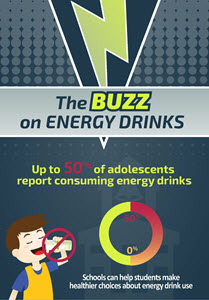
Healthy Youth
To receive email updates about this page, enter your email address:
Exit Notification / Disclaimer Policy
- The Centers for Disease Control and Prevention (CDC) cannot attest to the accuracy of a non-federal website.
- Linking to a non-federal website does not constitute an endorsement by CDC or any of its employees of the sponsors or the information and products presented on the website.
- You will be subject to the destination website's privacy policy when you follow the link.
- CDC is not responsible for Section 508 compliance (accessibility) on other federal or private website.

The future of healthy energy drinks starts with Lucky Energy: Founder Richard Laver's Tale of Survival, Innovation, and Rebellion And How It Led To the Creation of a Category Innovator
“He who has a why can bear any how.”
Friedrich Nietzsche, often regarded as the step-uncle of modern philosophy and psychology, published this idea in his book Twilight of the Idols in 1899. This gives insight into the meaning behind Nietzsche’s more famous quote, “That which does not kill us, makes us stronger” from the same book. While these concepts are easily rationalized, they cannot truly be understood until they are lived and experienced over time.
This is why Nietzsche posited the doctrine of eternal recurrence, to help people tap into their “why” and find meaning. Notwithstanding the details of Nietzsche’s thought experiment, the answer is the same: amor fati, love fate. This is meant to be read as a call to adventure to actively go into the world and contextualize any of the ‘negative’ aspects of one's life by finding a way to leverage these experiences to serve its greater narrative purpose.
Richard Laver, CEO & Founder
Beverage entrepreneur Richard Laver's journey is a testament to how loving your fate can transform your life for the better, no matter the depth of your misfortune. From surviving a near-fatal plane crash as a child to founding the world's leading plant-based medical food company and eventually launching Lucky F*ck Energy Drink now known as Lucky Energy , Laver's story is a testament to resilience, innovation, and the power of authenticity.
From the Ashes of Disaster
As a child, Richard experienced a profound premonition of danger before a plane crash that would dramatically alter the course of his life. The ensuing tragedy of Delta Flight 191, which claimed the lives of many including his father, left Richard as one of the few survivors, thanks to his intuitive decision not to fasten his seatbelt during the crash. This harrowing experience marked the beginning of a turbulent journey for Richard, fraught with PTSD, depression, and a series of reckless behaviors that echoed the chaos of surviving the unfathomable.

A Turning Point on Delray Beach
Richard's narrative took a pivotal turn when he found himself voluntarily homeless in Delray Beach, Florida, grappling with the weight of his existence. In a dramatic confrontation with his own mortality, he sought solace in the ocean's depths, yearning for an end to his anguish. Yet, it was on this beach that Richard's indomitable spirit was rekindled, sparking a resolve to find purpose and meaning in his life.
Nutritional Breakthrough and a Daughter’s Salvation
The health crisis of Richard's daughter, Katie, who suffered from cerebral palsy and was labeled with 'failure to thrive,' prompted a deep dive into nutritional science. Richard's relentless pursuit of a solution led to the creation of a superfood formula that not only saved Katie but also laid the groundwork for his first company. This venture was not just a business; it was a mission fueled by a father's love and quest to challenge the medical establishment's status quo.
Lucky F*ck: A Rebel's Vision
The genesis of the name original Lucky F*ck comes from a bracelet gifted to Richard by his son to celebrate the life he's lived. When thinking about his next chapter, he knew calling it Lucky F*ck would be the most authentic way to tell the raw story of his life, and in that, motivate others. Coming from the natural and organics industry, Laver recognized the white space in the energy beverage category and need for a clean beverage. The brand's anti-brand ethos encapsulate Richard's life lessons: perseverance, authenticity, and the rejection of societal norms in favor of a more inclusive and holistic worldview.
The brand is not just an energy drink; it's a narrative about overcoming adversity, challenging the status quo, and embracing the duality within us all. With its commitment to quality, health, and unexpected acts of charity, the brand challenges consumers to look beyond the surface. Now that the brand is rapidly expanding, its name will evolve to Lucky Energy, with the heart of the brand - its DNA - remaining the same.
Innovative Product, Market Disruption
With 0-sugar, 0-aftertaste, 5 calories and a minimal ingredient panel, including functional ingredients like maca and beta alanine, Lucky Energy has positioned itself as a cleaner, more flavorful, lifestyle-oriented alternative that transcends traditional market boundaries. Prominent VCs have also noticed the brand's early success, validating Laver’s original thesis: Imaginary Ventures led its $4 million Seed round in November, and Austin-based Brand Foundry Ventures recently led its Seed II round of $8 million. Imaginary Ventures and Sugar Capital were also involved in the Seed II raise to support the brand's expansion across the Anheuser-Busch family distribution houses and fuel operations, sales, and marketing.
New Campaign, New Name, New Look, Future Plans and Philosophical Foundations
With plans for provocative marketing campaigns and a commitment to pushing the envelope of brand storytelling, Lucky is poised to continue its trajectory as a catalyst for conversation and change. As such, the brand has made its first executive hire, bringing on Hamid Saify as Chief Marketing Officer. The former SVP of Retail at Liquid Death recently launched his first campaign with the brand called ‘Search at Your Own Risk,’ which is a 4-part comedy series that ignites commentary around censorship. It explores the consequences of typing 'Lucky Fuck’ into your search bar. It poses the question: what's the worst that could happen?? The hyperbolic responses regarding the brand's namesake is aimed directly at the industry's censorship practices, which is also highlighted in its new name Lucky Energy and new packaging, which includes black "duct tape" over the word F*ck, two planes hovering over the flavor icons, and its 5 ingredientes on the front of the can.
Watch the video now on Lucky F*ck Instagram HERE .
The campaign is heading to the streets, with wild postings splashed around New York City, Los Angeles, and Austin. Taking notes from pop art and high fashion, the artwork includes renaissance-inspired masterpieces you'd see in Italy as well as fashion photography you'd see in luxury media laderring back to Search For Us.
A Call to Authenticity and Tolerance
At its core, Richard Laver's journey and the ethos of Lucky Energy champion the values of authenticity, tolerance, and the courage to tell one's story unabashedly. Richard advocates for a society where individuality is celebrated, judgments are suspended, and people are empowered to live according to their truths.
Richard Laver's life and journey stand as a compelling blueprint for those striving to find their "why" and to actively love fate through taking action, ultimately creating a meaningful life.
Lucky Energy’s five flavors are available on Amazon . To learn more, check out their Tik Tok and Instagram .
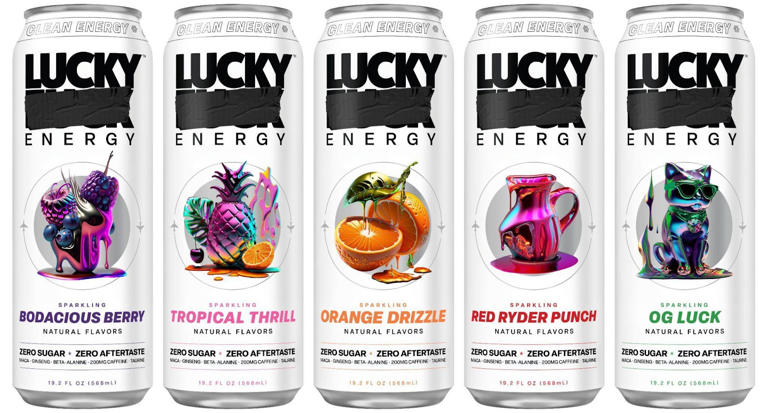
21 Energy Drink Brands, Ranked Worst To Best
They don't all taste like battery acid.
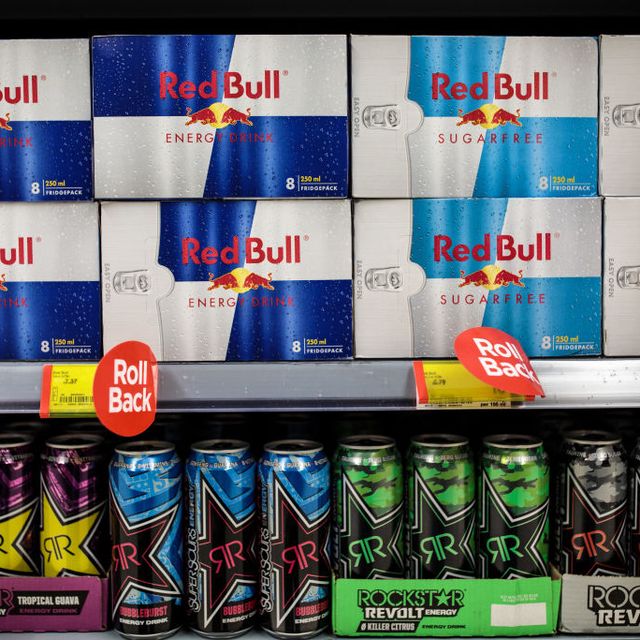
Delish editors handpick every product we feature. We may earn commission from the links on this page.
Caffeine is everywhere, but one particular niche in the beverage market gets an especially bad rap—energy drinks. And some of the criticism is warranted. Panera's caffeinated Charged Lemonades have been mired in controversy since they were released in 2022. Other energy-drink brands, like Prime, have faced serious backlash for targeting young consumers despite the serious potential side effects .
From a flavor and branding perspective, the energy-drink industry has historically missed the mark. Its aggressively hypermasculine advertising has created a boys club of sorts. But calling flavors "Hardcore Apple" and "Assault" was never enough to hide how gross they actually tasted.
Over the past several years, the energy-drink market has shifted. New brands have emerged with offerings that give you a boost of energy without tasting like battery acid. And now we can confidently say that some energy drinks are, in fact, refreshing and enjoyable.
Our team of editors tried energy drinks from 21 brands, sampling several flavors from each brand (whatever you do, do NOT try this at home). These are our unfiltered reviews of some of the most interesting brands on the market, ranked from worst to best:
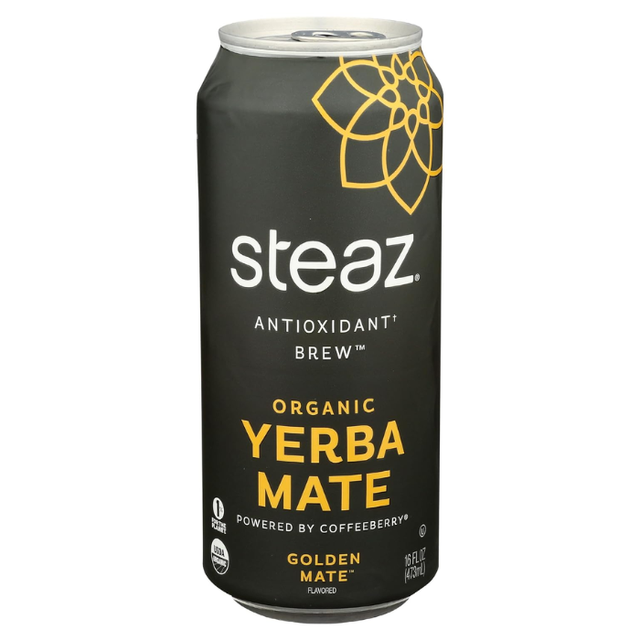
While we enjoy Steaz's mildly caffeinated green teas, their acerola- and coffeeberry-spiked yerba mate blends are rough . The 165 mg of caffeine is not enough to convince us to power through the funky, musty flavor. Don't get us wrong, we generally like yerba mate—but we don't like this.
20. Sambazon
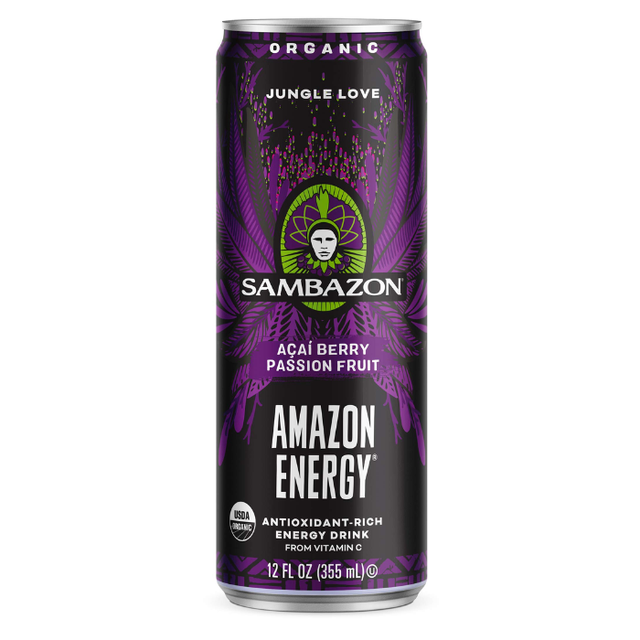
Açaí is a superfood packed with antioxidants that tastes great in smoothies and bowls . We often reach for Sambazon's products when making those recipes, but we can't see ourselves ever buying their energy drinks. The use of natural flavorings is a definite plus, but none of their flavors are really refreshing.
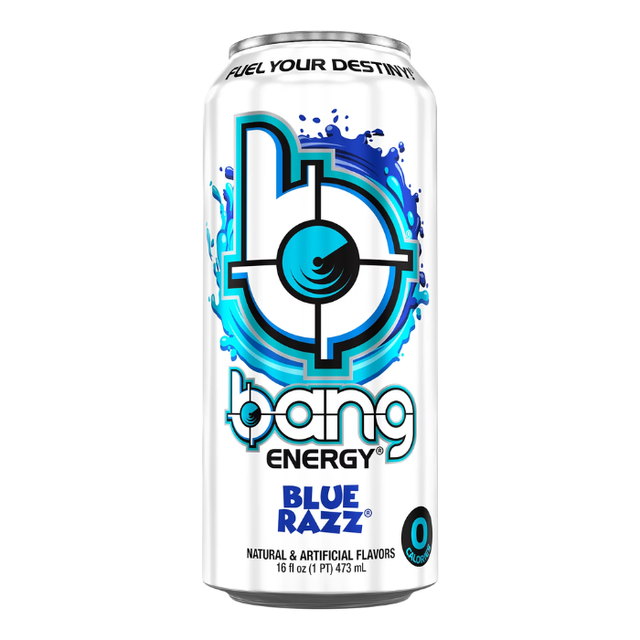
Gorgie is a relative newcomer, and we were initially excited that the lighthearted and feminine branding could break up the macho monotony of the market. The use of green tea-based caffeine is a definite plus, along with their use of natural flavors. But, unfortunately, it didn't taste natural at all. The Gorgie flavors we tried tasted generic and artificial with an aggressive chemical aftertaste (maybe from all the added supplements).
17. Alani Nu
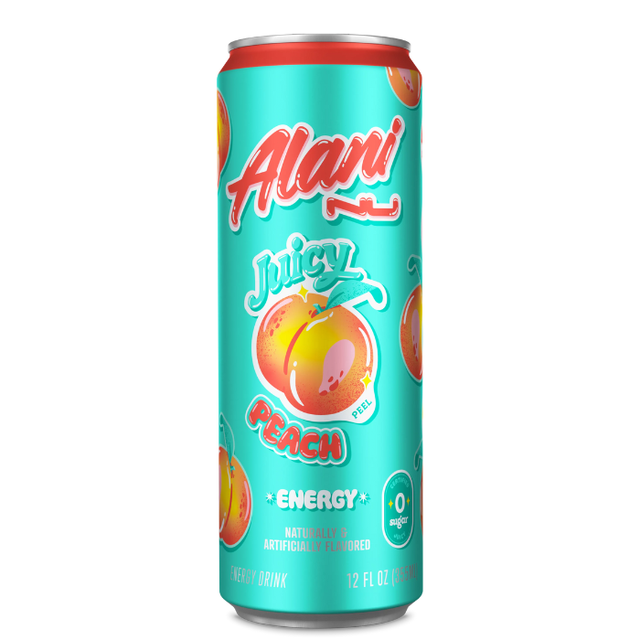
One of our tasters described the packaging of Alani Nu energy drinks as "vape shop-coded." You might recognize Alani Nu as the company that partnered with Kim Kardashian for her own signature energy drink . We didn't get the chance to try the famous Kimade, but all the others we drank tasted like straight-up chemicals.
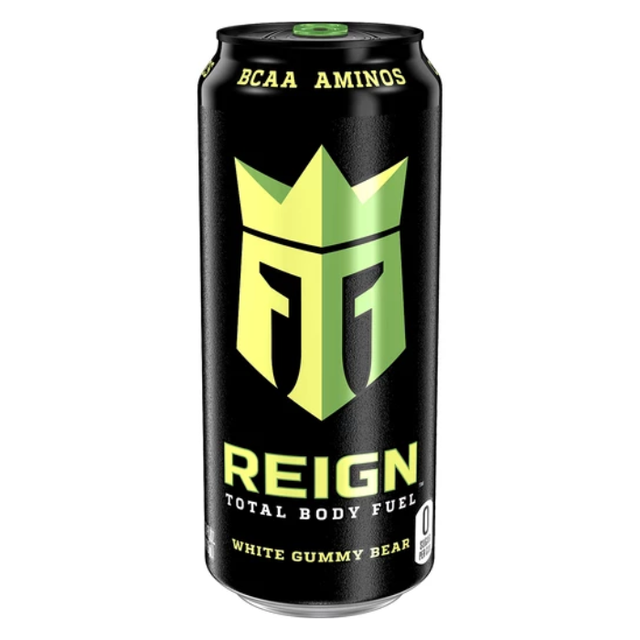
There's no better word to describe Reign's line of energy drinks than cloying . But, honestly, what else would you expect from flavors like Reignbow Sherbet and White Gummy Bear? This might have ranked higher spot on our list if it had more intense and refreshing carbonation to offset the sweetness.
15. Rockstar
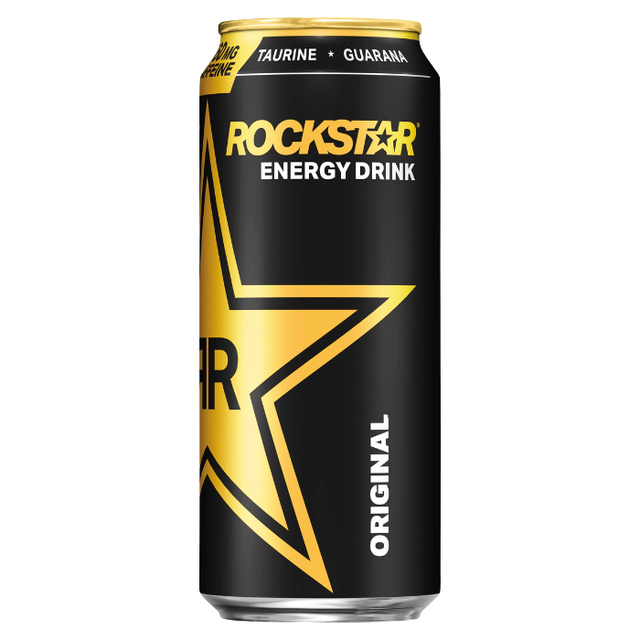
You're probably familiar with Rockstar. It's been a mainstay since 2001, and as of 2020, had a 10 percent market share of the global energy-drink market. But we didn't exactly enjoy the flavors we tried. Just like with many other brands, Rockstar is far too sweet to be considered refreshing.

Another energy drink with vape shop-style packaging. This is definitely a brand that would appeal to a young audience, with collaborations with Sour Warheads, Sour Patch Kids, and esports organization FaZe clan. And it's sweetened accordingly (i.e., heavily). But we will give the brand points for actually tasting like the candy on the labels.
13. Fast Twitch By Gatorade

When Gatorade announced that they were launching their own line of energy drinks in 2022, we were super excited. Our team was hoping for a caffeinated beverage that had the same refreshing hydration as Gatorade, but that was unfortunately not the case. One of our tasters said that "something's off" about Fast Twitch. Others added that you can taste the artificial sweeteners in every sip.
12. Monster
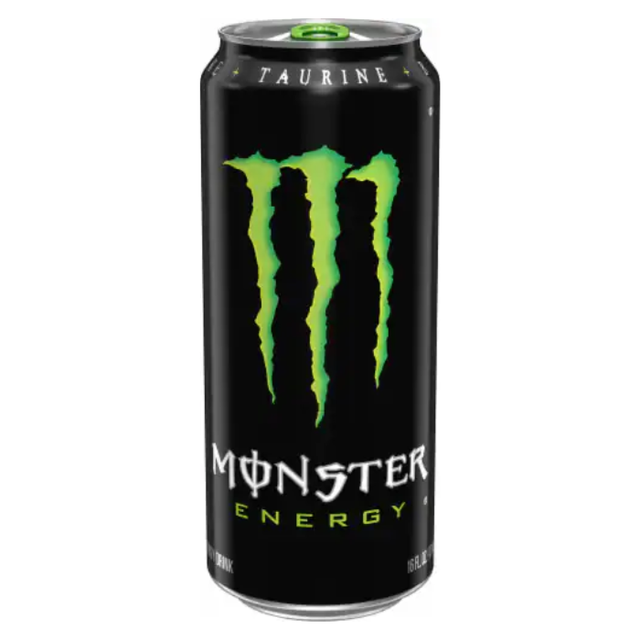
When we think of the intensely masculine branding of yesteryear, Monster is the first energy drink to come to mind. Some of the flavors are hit or miss, but the original recipe is actually not half bad. It's crisp and citrus-forward, which helps cut through some of the heavy sweetness. Getting past the packaging is still tough, though.
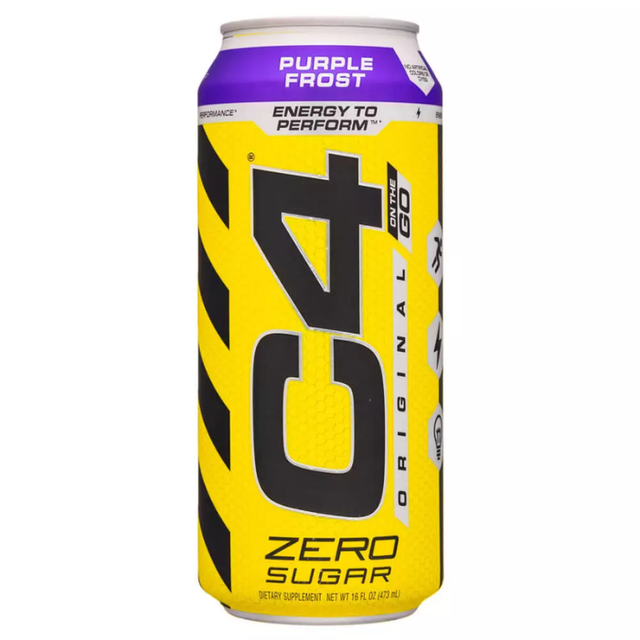
C4 has positioned itself as the best energy drink for fitness and performance. While we can't exactly comment on that aspect of their products, we did generally enjoy the carbonated flavors they have to offer. Orange Slice was a particular favorite, with one taster describing it as tasting like Sunny D.
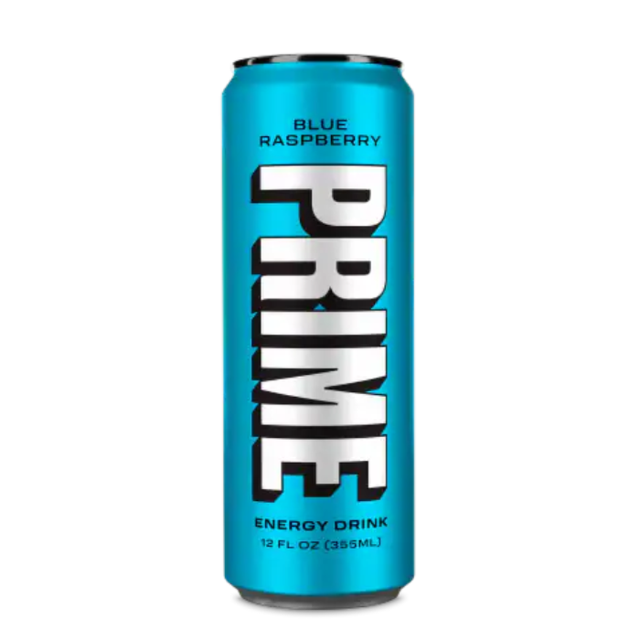
One of the founders of Prime is internet personality and public scourge Logan Paul. The beverage has received intense scrutiny over its caffeine content, including a scathing critique from Senator Chuck Schumer . The Canadian government even pulled it from shelves last year. But, scandal aside, it lowkey tastes pretty good. It's very carbonated and comes in interesting, albeit super sweet, flavors. We're not suddenly going to become fans of Logan Paul, but we'd drink Prime if it was around.
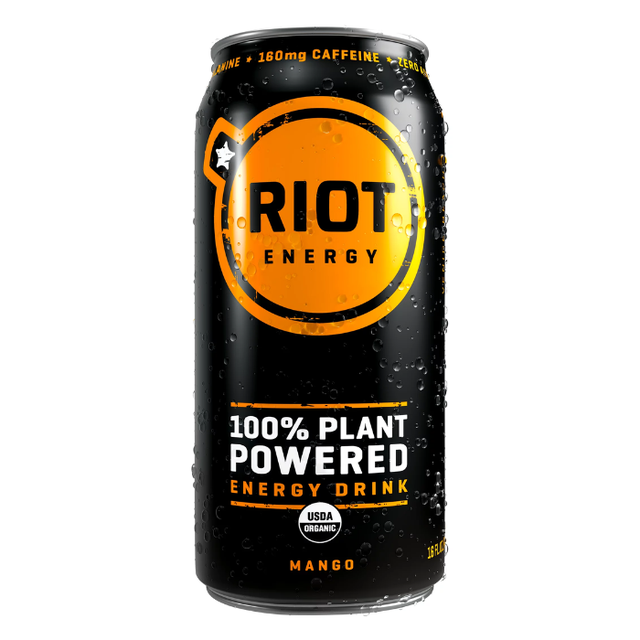
During this taste test we noticed that many sugar-free brands struggled to create natural-tasting flavors. Riot pleasantly surprised us. Even with the use of erythritol , their energy drinks actually tasted as advertised. The Strawberry Lemonade tasted like a drink from a sidewalk lemonade stand. The Mango actually tasted like real tropical fruit. And, most impressively, we could actually identify the berries in the Berry flavor.
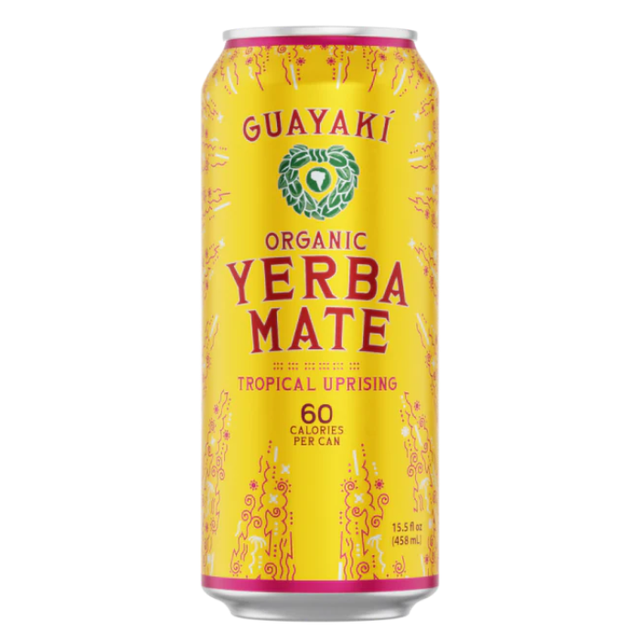
Guayakí makes yerba mate for every type of consumer. There's the unsweetened and earthy tereré for tea lovers. They have the sparkling cola-esque sippers, like Classic Gold. And they have inventive flavors like Bluephoria for those who want yerba mate's energy without the taste. We love Guayakí for both the taste and the variety.
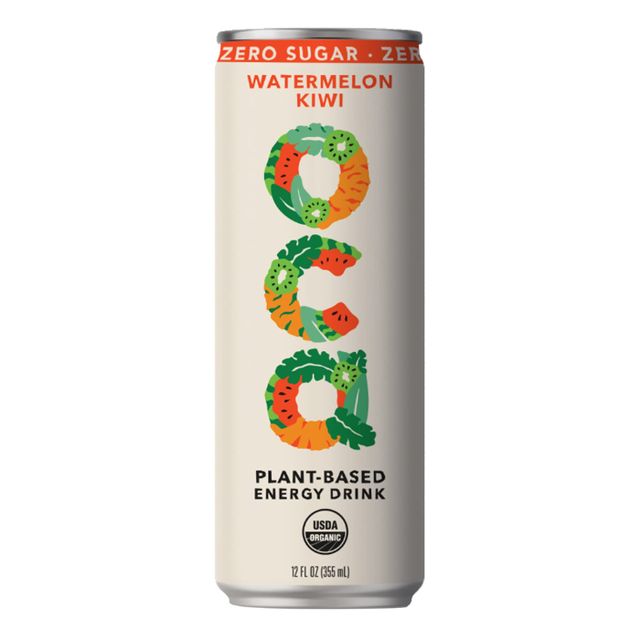
What sets Oca apart from its competitors is the use of tapioca for energy. We're not exactly sure how much better it is than other types of caffeine, but we do know that their products taste really good. Oca is super refreshing, not too sweet, and only contains ingredients that we recognize.
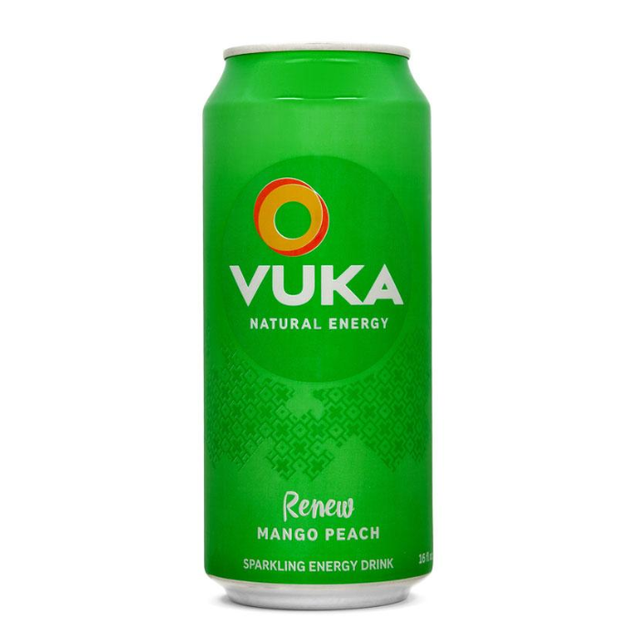
Vuka uses cane sugar as its primary sweetener; in the realm of energy drinks, that's a good thing. You get the sweetness without the chemical aftertaste of sugar-free alternatives. Their flavors are super fresh, and the carbonation makes it perfectly refreshing. It tastes more like an artisanal soda than an energy drink.
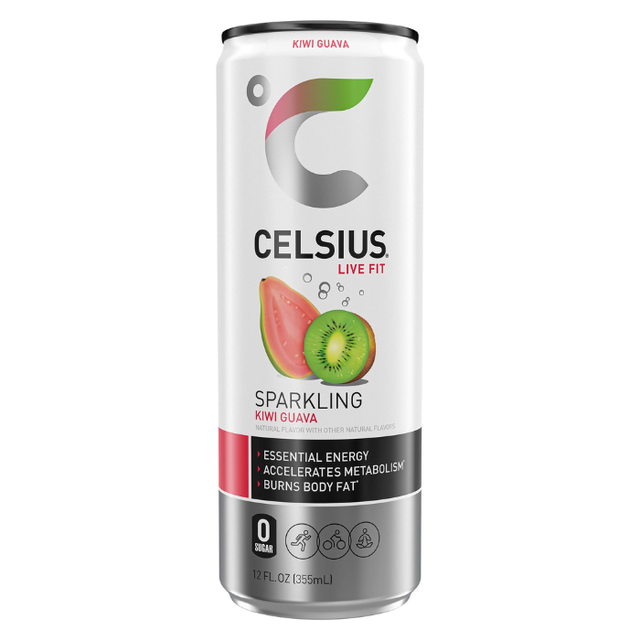
The brand on everybody's lips right now is Celsius, and for good reason. They have two-dozen flavors to choose from. Although we advise steering away from any of their flavors that have the word "Vibe" in them, the other cans we tried are genuinely delicious.
4. Clean Cause
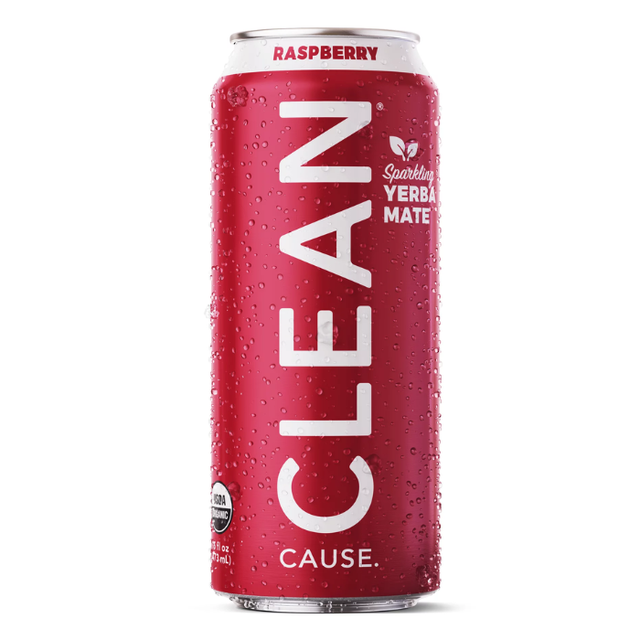
Clean Cause was our favorite yerba mate-based energy drink by a mile. It contains cane sugar and erythritol, so you get the best of both worlds: relatively low in calories without intense chemical flavors. They also had some of our favorite flavors of all the brands we tried. Pick up a Watermelon Mint and thank us later.
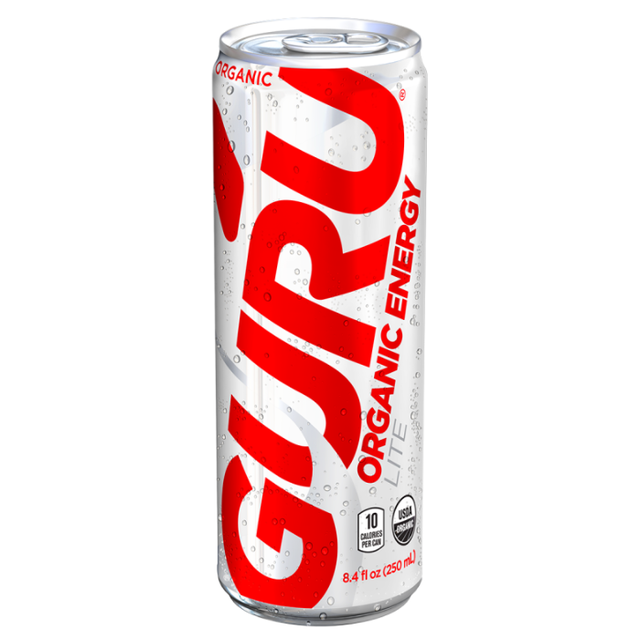
We love Guru primarily because they use real fruit juice concentrates as a sweetener for their energy drinks. Beyond tasting more natural than a sugar substitute, it helps their flavors actually taste as advertised. The Guru Original tastes like straight up grape soda in the best way possible.
2. Red Bull
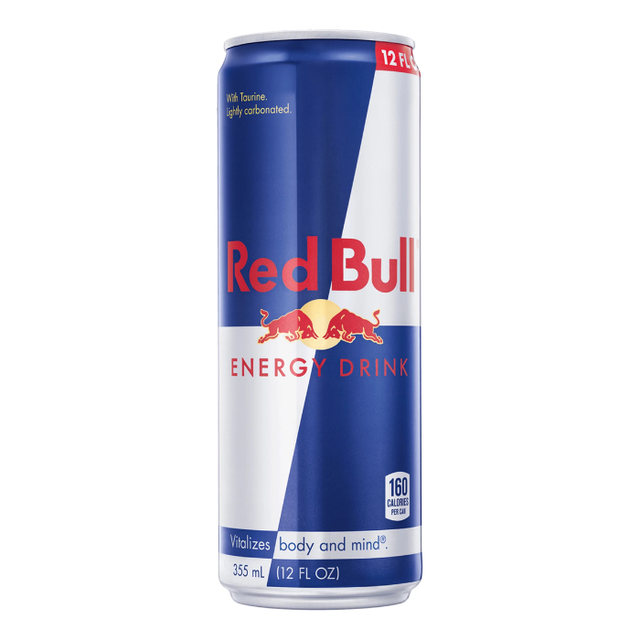
The origins of Red Bull date back to 1960s Thailand , but it began achieving widespread popularity as an après ski drink in Austria in the late-'80s. As of 2020, it's the most popular energy drink in the world. Even though they've expanded their lineup of flavors, we love the original Red Bull because it's equally sweet and tart, perfectly carbonated, and just downright nostalgic.
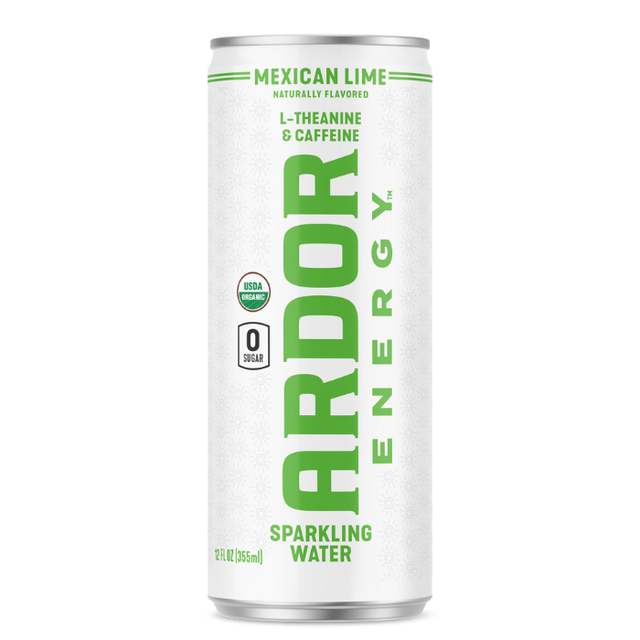
We had never heard of Ardor before conducting this test, but sampling their energy drinks made us rethink the entire category. One of our tasters said it was the La Croix of energy drinks because there's no sugar or sugar substitutes. It's just sparkling water, subtle flavoring, electrolytes, and caffeine. Ardor is genuinely hydrating and refreshing, and we could easily see ourselves incorporating it into our beverage rotation.
Gabby Romero is an associate editor at Delish, where she writes stories about the latest TikTok trends, develops recipes, and answers any and all of your cooking-related questions. She loves eating spicy food, collecting cookbooks, and adding a mountain of Parmesan to any dish she can.

These Are The Only Hard Seltzers Worth Buying

The Best Gluten-Free Pasta

I Tested KitchenAid's First-Ever Rice Cooker

The Best (And Worst) Olive Oil Brands, Ranked
8 Fast And Powerful Grill Cleaners Worth Buying
The 6 Best Small Rice Cookers
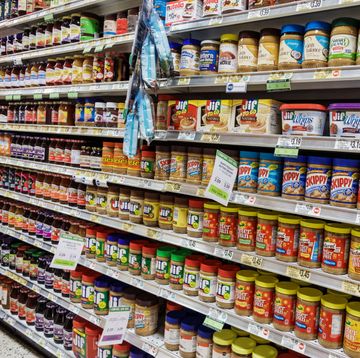
The Best Peanut Butter Brands, Ranked
The 17 Best Coffee Beans Of 2024

The Best Presidents' Day Appliance Deals

This Discounted Food Chopper Makes Cooking Easy
The Best & Worst Athlete-Owned Alcohol Brands
88 Energy Drink Essay Topic Ideas & Examples
🏆 best energy drink topic ideas & essay examples, 🥇 most interesting energy drink topics to write about, 📝 good essay topics on energy drinks, ❓ energy drink research questions.
- New Energy Drink Marketing Strategy The Mission of the company is to be a leader in the manufacturing and marketing of healthy, nutritious beverages in the USA and to satisfy consumers’ needs while at the same time enhancing the individual […]
- Energy Drinks: Benefits and Disadvantages Energy drinks are a relatively new product; the number of sales has been growing since the end of the 20th century. The subject of energy drinks remains debatable as the data available on the effects […] We will write a custom essay specifically for you by our professional experts 808 writers online Learn More
- Negative Effects of Caffeine and Energy Drinks It leads to avoidance of making choices and biasness and may result in impaired self-regulation that may affect the social problems of the users.
- Brand Equity for Red Bull and Monster Energy Drinks However, the production process of the Red Bull energy drink is superior to that of Monster energy in terms of ingredients.
- New Zealand’s Energy Drinks Industry Marketing Research As a result of increased acceptance of energy drinks, New Zealand has been ranked amongst countries with the highest rate of energy drink consumption.
- Benefits of Energy Drinks According to Bohlmann et al, energy drinks are being advertised time and then on televisions, radios, and newspapers because of their ability the improvement of metabolism and boost of energy levels of an individual.
- Consumer Behaviour: Soft Energy Drinks Purchase & Consumption However, marketing and availability of products at the convenience of consumers lead to subconscious action of buying the product. Marketing the product also expands the market to another group that was not initially included in […]
- The Master Budget for an Energy Drink Called Blue Camel The master budget or commonly referred to as the financial plan is another common type of budget, which is extremely extensive and wide in coverage.
- “Skinny Boost” Energy Drink Advertisement In modern society, many girls and women could want to achieve a body shape that is of a model, who is usually thin, and their shape is similar to that of the woman in the […]
- Energy Drink Competition Analysis The short product life cycle in this industry requires an effective research and development strategy to ensure that new products are availed to the market at the opportune time.
- Rhetoric of Article on Health Risks Posed by Energy Drinks This is a factual statement which the authors used to illustrate their premise on the consequences of drinking energy drinks to the health of the user.
- Edge Incorporated: Producer of Organic Energy Drink To establish a foundation for discussion, Edge Incorporated specializes in offering new generation energy drinks that not only boost energy levels and have exceptional flavors.
- Energy Drinks: Is It Bad Energy? The concept of energy drinks dates back to the beginning of the 20th century when brands such as Pepsi became popular, and the controversies surrounding the safety of these products started at the time.
- Country Risk and Strategic Planning: AMP Energy Drink This is the first risk in the market as it means that they already have a stronghold and an upper hand in the market.
- Aggression Dependence on Energy Drinks Consumption The main purpose of the proposal research is to conduct the influence of energy drinks based on caffeine on people’s psychological condition, paying significant attention to the arouse of aggression in their behavior.
- Price Influence on Energy Drink Consumption Behavior The goal of the report is to explore the consumption behavior of customers in response to price changes. The understanding of the consumption behavior of customers plays a central role in the marketing of products.
- 5 Hour Energy Drink: Observational Field Research Based on the claims made on the 5 Hour Energy website, the hypothesized characteristics of the people I expect to be buying the product are the age between 14 and 55, male gender prevailing, and […]
- AMP Energy Drink Introduction in India Being the second-most populous country in the world, India poses a huge market size and potential to become a global force in terms of business.
- Energy Drink Product Marketing As far as the objectives regarding the brand in question are concerned, it will be imperative that the introduction of the product into the global market should trigger at least a 10% increase in the […]
- Sports and Energy Drinks Marketing Analysis The study selected the United Kingdom, which has a target market that comprise of the youth, the middle-aged adults, and the old adults.
- The Dangers of Energy Drinks The article, written in the New York Times and dated 1 February 2011, expounds on the dangers of energy drinks to children and presents scientists’ concern about the high content of caffeine in the energy […]
- Competition in Energy Drinks, Sports Drinks & Vitamin Enhanced Beverage The major strategy of the beverage companies has been to diversify and make enormous extension of their brands in the market.
- The Effects of Energy Drinks and Alcohol on Neuropsychological Functioning According to the title of the report, the aim of Curry and Stasio is to identify the effects of energy drinks and alcohol on neuropsychological functioning.
- Cerebro- And Cardio-vascular Responses to Energy Drink in Young Adults: Is There a Gender Effect?
- Health Effects and Public Health Concerns of Energy Drink Consumption in the United States
- Energy Drinks and the Energy Drink Industry Overview
- Analyzing the Marketing Environment Pepsi Energy Drink
- Energy Drink Project for Marketing Management
- How Does The Consumption Of A Particular Energy Drink
- Energy Drink and Reaction Timing
- Comparing Energy Drink and Alternative Beverages
- Energy Drink Market Overview
- Breakfast and Energy Drink Consumption in Secondary School Children
- Energy Drink Age Restriction
- How Red Bull Went Straight to the Top of the Energy Drink Market
- Energy Drink and Alternative Beverages
- Accounting: Generally Accepted Accounting Principles and Energy Drink
- Energy Drink Project for Marketing Management Essay
- Hggh Company’s Expansion Into the Energy Drink Market
- Contact Points for Jones Synergy Energy Drink Campaign & Conclusion
- Energy Drink Company SWOT Analysis
- Energy Drink Market How Long Will It Last
- Red Bull and Energy Drink Industry – Threat of Substitutes
- Miller (2008) Examined the Energy Drink Consumption
- Marketing Plan for Launching Monster Ultra Energy Drink
- Red Bull Worlds Most Popular Energy Drink Brand
- Regulating Energy Drink Sales: Why the Sale of Energy
- Integrated Marketing Communication Plan of Energy Drink
- Recharge and Buy Energy Drink Now
- Monster Energy Drink Target Audience and Company Objectives
- Regression Using Energy Drink Data
- Market Opportunity Factors for Red Bull Energy Drink
- Negative Media Exposure for Red Bull Energy Drink
- McDonalds Energy Drink Research
- Tiger Energy Drink Marketing Plan
- Recharge Your Body With No Fear Energy Drink
- Yuma Puma Energy Drink: The Price Is Heating Up
- Monster Energy Drink Company Financial Ratio Analysis
- New Product Development: How to Launch an Energy Drink
- The Sports Energy Drink Industry Overview
- Redux Beverages LLC and Cocaine Energy Drink
- Sting Energy Drink Idea Screening
- Is the Energy Drink Industry Growing?
- What Is the Future of Energy Drinks?
- How Do Energy Drink Companies Make Money?
- What Is the Main Problem With Energy Drinks?
- Do Energy Drinks Improve Mental Health?
- Are Energy Drinks Safe for Children?
- Who Are the Biggest Consumers of Energy Drinks?
- Can Energy Drinks Be Healthy?
- What Are the Advantages and Disadvantages of Energy Drinks?
- Do Energy Drinks Have Negative Effects?
- Who Are the Major Players in Energy Drink Industry?
- How Did Energy Drinks Become Popular?
- Why Do Energy Drinks Have a Bad Reputation?
- How Big Is the Energy Drink Industry?
- What Was the First Modern Energy Drink?
- How Do Energy Drinks Affect Your Brain?
- What Country Banned Energy Drinks?
- Do Energy Drinks Replace Food?
- Are Energy Drinks Worse Than Coffee?
- Can Energy Drinks Cause Stress?
- Should Energy Drinks Be Avoided?
- Are Energy Drinks Bad for Your Heart?
- How Are Energy Drinks Different From Other Drinks?
- Do Energy Drinks Affect Blood Vessels?
- Are Energy Drinks Functional Beverages?
- Chicago (A-D)
- Chicago (N-B)
IvyPanda. (2023, September 26). 88 Energy Drink Essay Topic Ideas & Examples. https://ivypanda.com/essays/topic/energy-drink-essay-topics/
"88 Energy Drink Essay Topic Ideas & Examples." IvyPanda , 26 Sept. 2023, ivypanda.com/essays/topic/energy-drink-essay-topics/.
IvyPanda . (2023) '88 Energy Drink Essay Topic Ideas & Examples'. 26 September.
IvyPanda . 2023. "88 Energy Drink Essay Topic Ideas & Examples." September 26, 2023. https://ivypanda.com/essays/topic/energy-drink-essay-topics/.
1. IvyPanda . "88 Energy Drink Essay Topic Ideas & Examples." September 26, 2023. https://ivypanda.com/essays/topic/energy-drink-essay-topics/.
Bibliography
IvyPanda . "88 Energy Drink Essay Topic Ideas & Examples." September 26, 2023. https://ivypanda.com/essays/topic/energy-drink-essay-topics/.
- Caffeine Paper Topics
- Target Market Topics
- Coca Cola Topics
- Beer Research Ideas
- Coffee Essay Ideas
- Alcohol Essay Titles
- Nestle Topics
- Tea Research Topics
- Water Research Ideas
- Starbucks Topics
- Wine Essay Titles
- Neuropsychology Topics
- Food & Beverage Topics
- Pepsi Topics
- Beverage Questions
Things you buy through our links may earn Vox Media a commission
The Case for Marrying an Older Man
A woman’s life is all work and little rest. an age gap relationship can help..

In the summer, in the south of France, my husband and I like to play, rather badly, the lottery. We take long, scorching walks to the village — gratuitous beauty, gratuitous heat — kicking up dust and languid debates over how we’d spend such an influx. I purchase scratch-offs, jackpot tickets, scraping the former with euro coins in restaurants too fine for that. I never cash them in, nor do I check the winning numbers. For I already won something like the lotto, with its gifts and its curses, when he married me.
He is ten years older than I am. I chose him on purpose, not by chance. As far as life decisions go, on balance, I recommend it.
When I was 20 and a junior at Harvard College, a series of great ironies began to mock me. I could study all I wanted, prove myself as exceptional as I liked, and still my fiercest advantage remained so universal it deflated my other plans. My youth. The newness of my face and body. Compellingly effortless; cruelly fleeting. I shared it with the average, idle young woman shrugging down the street. The thought, when it descended on me, jolted my perspective, the way a falling leaf can make you look up: I could diligently craft an ideal existence, over years and years of sleepless nights and industry. Or I could just marry it early.
So naturally I began to lug a heavy suitcase of books each Saturday to the Harvard Business School to work on my Nabokov paper. In one cavernous, well-appointed room sat approximately 50 of the planet’s most suitable bachelors. I had high breasts, most of my eggs, plausible deniability when it came to purity, a flush ponytail, a pep in my step that had yet to run out. Apologies to Progress, but older men still desired those things.
I could not understand why my female classmates did not join me, given their intelligence. Each time I reconsidered the project, it struck me as more reasonable. Why ignore our youth when it amounted to a superpower? Why assume the burdens of womanhood, its too-quick-to-vanish upper hand, but not its brief benefits at least? Perhaps it came easier to avoid the topic wholesale than to accept that women really do have a tragically short window of power, and reason enough to take advantage of that fact while they can. As for me, I liked history, Victorian novels, knew of imminent female pitfalls from all the books I’d read: vampiric boyfriends; labor, at the office and in the hospital, expected simultaneously; a decline in status as we aged, like a looming eclipse. I’d have disliked being called calculating, but I had, like all women, a calculator in my head. I thought it silly to ignore its answers when they pointed to an unfairness for which we really ought to have been preparing.
I was competitive by nature, an English-literature student with all the corresponding major ambitions and minor prospects (Great American novel; email job). A little Bovarist , frantic for new places and ideas; to travel here, to travel there, to be in the room where things happened. I resented the callow boys in my class, who lusted after a particular, socially sanctioned type on campus: thin and sexless, emotionally detached and socially connected, the opposite of me. Restless one Saturday night, I slipped on a red dress and snuck into a graduate-school event, coiling an HDMI cord around my wrist as proof of some technical duty. I danced. I drank for free, until one of the organizers asked me to leave. I called and climbed into an Uber. Then I promptly climbed out of it. For there he was, emerging from the revolving doors. Brown eyes, curved lips, immaculate jacket. I went to him, asked him for a cigarette. A date, days later. A second one, where I discovered he was a person, potentially my favorite kind: funny, clear-eyed, brilliant, on intimate terms with the universe.
I used to love men like men love women — that is, not very well, and with a hunger driven only by my own inadequacies. Not him. In those early days, I spoke fondly of my family, stocked the fridge with his favorite pasta, folded his clothes more neatly than I ever have since. I wrote his mother a thank-you note for hosting me in his native France, something befitting a daughter-in-law. It worked; I meant it. After graduation and my fellowship at Oxford, I stayed in Europe for his career and married him at 23.
Of course I just fell in love. Romances have a setting; I had only intervened to place myself well. Mainly, I spotted the precise trouble of being a woman ahead of time, tried to surf it instead of letting it drown me on principle. I had grown bored of discussions of fair and unfair, equal or unequal , and preferred instead to consider a thing called ease.
The reception of a particular age-gap relationship depends on its obviousness. The greater and more visible the difference in years and status between a man and a woman, the more it strikes others as transactional. Transactional thinking in relationships is both as American as it gets and the least kosher subject in the American romantic lexicon. When a 50-year-old man and a 25-year-old woman walk down the street, the questions form themselves inside of you; they make you feel cynical and obscene: How good of a deal is that? Which party is getting the better one? Would I take it? He is older. Income rises with age, so we assume he has money, at least relative to her; at minimum, more connections and experience. She has supple skin. Energy. Sex. Maybe she gets a Birkin. Maybe he gets a baby long after his prime. The sight of their entwined hands throws a lucid light on the calculations each of us makes, in love, to varying degrees of denial. You could get married in the most romantic place in the world, like I did, and you would still have to sign a contract.
Twenty and 30 is not like 30 and 40; some freshness to my features back then, some clumsiness in my bearing, warped our decade, in the eyes of others, to an uncrossable gulf. Perhaps this explains the anger we felt directed at us at the start of our relationship. People seemed to take us very, very personally. I recall a hellish car ride with a friend of his who began to castigate me in the backseat, in tones so low that only I could hear him. He told me, You wanted a rich boyfriend. You chased and snuck into parties . He spared me the insult of gold digger, but he drew, with other words, the outline for it. Most offended were the single older women, my husband’s classmates. They discussed me in the bathroom at parties when I was in the stall. What does he see in her? What do they talk about? They were concerned about me. They wielded their concern like a bludgeon. They paraphrased without meaning to my favorite line from Nabokov’s Lolita : “You took advantage of my disadvantage,” suspecting me of some weakness he in turn mined. It did not disturb them, so much, to consider that all relationships were trades. The trouble was the trade I’d made struck them as a bad one.
The truth is you can fall in love with someone for all sorts of reasons, tiny transactions, pluses and minuses, whose sum is your affection for each other, your loyalty, your commitment. The way someone picks up your favorite croissant. Their habit of listening hard. What they do for you on your anniversary and your reciprocal gesture, wrapped thoughtfully. The serenity they inspire; your happiness, enlivening it. When someone says they feel unappreciated, what they really mean is you’re in debt to them.
When I think of same-age, same-stage relationships, what I tend to picture is a woman who is doing too much for too little.
I’m 27 now, and most women my age have “partners.” These days, girls become partners quite young. A partner is supposed to be a modern answer to the oppression of marriage, the terrible feeling of someone looming over you, head of a household to which you can only ever be the neck. Necks are vulnerable. The problem with a partner, however, is if you’re equal in all things, you compromise in all things. And men are too skilled at taking .
There is a boy out there who knows how to floss because my friend taught him. Now he kisses college girls with fresh breath. A boy married to my friend who doesn’t know how to pack his own suitcase. She “likes to do it for him.” A million boys who know how to touch a woman, who go to therapy because they were pushed, who learned fidelity, boundaries, decency, manners, to use a top sheet and act humanely beneath it, to call their mothers, match colors, bring flowers to a funeral and inhale, exhale in the face of rage, because some girl, some girl we know, some girl they probably don’t speak to and will never, ever credit, took the time to teach him. All while she was working, raising herself, clawing up the cliff-face of adulthood. Hauling him at her own expense.
I find a post on Reddit where five thousand men try to define “ a woman’s touch .” They describe raised flower beds, blankets, photographs of their loved ones, not hers, sprouting on the mantel overnight. Candles, coasters, side tables. Someone remembering to take lint out of the dryer. To give compliments. I wonder what these women are getting back. I imagine them like Cinderella’s mice, scurrying around, their sole proof of life their contributions to a more central character. On occasion I meet a nice couple, who grew up together. They know each other with a fraternalism tender and alien to me. But I think of all my friends who failed at this, were failed at this, and I think, No, absolutely not, too risky . Riskier, sometimes, than an age gap.
My younger brother is in his early 20s, handsome, successful, but in many ways: an endearing disaster. By his age, I had long since wisened up. He leaves his clothes in the dryer, takes out a single shirt, steams it for three minutes. His towel on the floor, for someone else to retrieve. His lovely, same-age girlfriend is aching to fix these tendencies, among others. She is capable beyond words. Statistically, they will not end up together. He moved into his first place recently, and she, the girlfriend, supplied him with a long, detailed list of things he needed for his apartment: sheets, towels, hangers, a colander, which made me laugh. She picked out his couch. I will bet you anything she will fix his laundry habits, and if so, they will impress the next girl. If they break up, she will never see that couch again, and he will forget its story. I tell her when I visit because I like her, though I get in trouble for it: You shouldn’t do so much for him, not for someone who is not stuck with you, not for any boy, not even for my wonderful brother.
Too much work had left my husband, by 30, jaded and uninspired. He’d burned out — but I could reenchant things. I danced at restaurants when they played a song I liked. I turned grocery shopping into an adventure, pleased by what I provided. Ambitious, hungry, he needed someone smart enough to sustain his interest, but flexible enough in her habits to build them around his hours. I could. I do: read myself occupied, make myself free, materialize beside him when he calls for me. In exchange, I left a lucrative but deadening spreadsheet job to write full-time, without having to live like a writer. I learned to cook, a little, and decorate, somewhat poorly. Mostly I get to read, to walk central London and Miami and think in delicious circles, to work hard, when necessary, for free, and write stories for far less than minimum wage when I tally all the hours I take to write them.
At 20, I had felt daunted by the project of becoming my ideal self, couldn’t imagine doing it in tandem with someone, two raw lumps of clay trying to mold one another and only sullying things worse. I’d go on dates with boys my age and leave with the impression they were telling me not about themselves but some person who didn’t exist yet and on whom I was meant to bet regardless. My husband struck me instead as so finished, formed. Analyzable for compatibility. He bore the traces of other women who’d improved him, small but crucial basics like use a coaster ; listen, don’t give advice. Young egos mellow into patience and generosity.
My husband isn’t my partner. He’s my mentor, my lover, and, only in certain contexts, my friend. I’ll never forget it, how he showed me around our first place like he was introducing me to myself: This is the wine you’ll drink, where you’ll keep your clothes, we vacation here, this is the other language we’ll speak, you’ll learn it, and I did. Adulthood seemed a series of exhausting obligations. But his logistics ran so smoothly that he simply tacked mine on. I moved into his flat, onto his level, drag and drop, cleaner thrice a week, bills automatic. By opting out of partnership in my 20s, I granted myself a kind of compartmentalized, liberating selfishness none of my friends have managed. I am the work in progress, the party we worry about, a surprising dominance. When I searched for my first job, at 21, we combined our efforts, for my sake. He had wisdom to impart, contacts with whom he arranged coffees; we spent an afternoon, laughing, drawing up earnest lists of my pros and cons (highly sociable; sloppy math). Meanwhile, I took calls from a dear friend who had a boyfriend her age. Both savagely ambitious, hyperclose and entwined in each other’s projects. If each was a start-up , the other was the first hire, an intense dedication I found riveting. Yet every time she called me, I hung up with the distinct feeling that too much was happening at the same time: both learning to please a boss; to forge more adult relationships with their families; to pay bills and taxes and hang prints on the wall. Neither had any advice to give and certainly no stability. I pictured a three-legged race, two people tied together and hobbling toward every milestone.
I don’t fool myself. My marriage has its cons. There are only so many times one can say “thank you” — for splendid scenes, fine dinners — before the phrase starts to grate. I live in an apartment whose rent he pays and that shapes the freedom with which I can ever be angry with him. He doesn’t have to hold it over my head. It just floats there, complicating usual shorthands to explain dissatisfaction like, You aren’t being supportive lately . It’s a Frenchism to say, “Take a decision,” and from time to time I joke: from whom? Occasionally I find myself in some fabulous country at some fabulous party and I think what a long way I have traveled, like a lucky cloud, and it is frightening to think of oneself as vapor.
Mostly I worry that if he ever betrayed me and I had to move on, I would survive, but would find in my humor, preferences, the way I make coffee or the bed nothing that he did not teach, change, mold, recompose, stamp with his initials, the way Renaissance painters hid in their paintings their faces among a crowd. I wonder if when they looked at their paintings, they saw their own faces first. But this is the wrong question, if our aim is happiness. Like the other question on which I’m expected to dwell: Who is in charge, the man who drives or the woman who put him there so she could enjoy herself? I sit in the car, in the painting it would have taken me a corporate job and 20 years to paint alone, and my concern over who has the upper hand becomes as distant as the horizon, the one he and I made so wide for me.
To be a woman is to race against the clock, in several ways, until there is nothing left to be but run ragged.
We try to put it off, but it will hit us at some point: that we live in a world in which our power has a different shape from that of men, a different distribution of advantage, ours a funnel and theirs an expanding cone. A woman at 20 rarely has to earn her welcome; a boy at 20 will be turned away at the door. A woman at 30 may find a younger woman has taken her seat; a man at 30 will have invited her. I think back to the women in the bathroom, my husband’s classmates. What was my relationship if not an inconvertible sign of this unfairness? What was I doing, in marrying older, if not endorsing it? I had taken advantage of their disadvantage. I had preempted my own. After all, principled women are meant to defy unfairness, to show some integrity or denial, not plan around it, like I had. These were driven women, successful, beautiful, capable. I merely possessed the one thing they had already lost. In getting ahead of the problem, had I pushed them down? If I hadn’t, would it really have made any difference?
When we decided we wanted to be equal to men, we got on men’s time. We worked when they worked, retired when they retired, had to squeeze pregnancy, children, menopause somewhere impossibly in the margins. I have a friend, in her late 20s, who wears a mood ring; these days it is often red, flickering in the air like a siren when she explains her predicament to me. She has raised her fair share of same-age boyfriends. She has put her head down, worked laboriously alongside them, too. At last she is beginning to reap the dividends, earning the income to finally enjoy herself. But it is now, exactly at this precipice of freedom and pleasure, that a time problem comes closing in. If she would like to have children before 35, she must begin her next profession, motherhood, rather soon, compromising inevitably her original one. The same-age partner, equally unsettled in his career, will take only the minimum time off, she guesses, or else pay some cost which will come back to bite her. Everything unfailingly does. If she freezes her eggs to buy time, the decision and its logistics will burden her singly — and perhaps it will not work. Overlay the years a woman is supposed to establish herself in her career and her fertility window and it’s a perfect, miserable circle. By midlife women report feeling invisible, undervalued; it is a telling cliché, that after all this, some husbands leave for a younger girl. So when is her time, exactly? For leisure, ease, liberty? There is no brand of feminism which achieved female rest. If women’s problem in the ’50s was a paralyzing malaise, now it is that they are too active, too capable, never permitted a vacation they didn’t plan. It’s not that our efforts to have it all were fated for failure. They simply weren’t imaginative enough.
For me, my relationship, with its age gap, has alleviated this rush , permitted me to massage the clock, shift its hands to my benefit. Very soon, we will decide to have children, and I don’t panic over last gasps of fun, because I took so many big breaths of it early: on the holidays of someone who had worked a decade longer than I had, in beautiful places when I was young and beautiful, a symmetry I recommend. If such a thing as maternal energy exists, mine was never depleted. I spent the last nearly seven years supported more than I support and I am still not as old as my husband was when he met me. When I have a child, I will expect more help from him than I would if he were younger, for what does professional tenure earn you if not the right to set more limits on work demands — or, if not, to secure some child care, at the very least? When I return to work after maternal upheaval, he will aid me, as he’s always had, with his ability to put himself aside, as younger men are rarely able.
Above all, the great gift of my marriage is flexibility. A chance to live my life before I become responsible for someone else’s — a lover’s, or a child’s. A chance to write. A chance at a destiny that doesn’t adhere rigidly to the routines and timelines of men, but lends itself instead to roomy accommodation, to the very fluidity Betty Friedan dreamed of in 1963 in The Feminine Mystique , but we’ve largely forgotten: some career or style of life that “permits year-to-year variation — a full-time paid job in one community, part-time in another, exercise of the professional skill in serious volunteer work or a period of study during pregnancy or early motherhood when a full-time job is not feasible.” Some things are just not feasible in our current structures. Somewhere along the way we stopped admitting that, and all we did was make women feel like personal failures. I dream of new structures, a world in which women have entry-level jobs in their 30s; alternate avenues for promotion; corporate ladders with balconies on which they can stand still, have a smoke, take a break, make a baby, enjoy themselves, before they keep climbing. Perhaps men long for this in their own way. Actually I am sure of that.
Once, when we first fell in love, I put my head in his lap on a long car ride; I remember his hands on my face, the sun, the twisting turns of a mountain road, surprising and not surprising us like our romance, and his voice, telling me that it was his biggest regret that I was so young, he feared he would lose me. Last week, we looked back at old photos and agreed we’d given each other our respective best years. Sometimes real equality is not so obvious, sometimes it takes turns, sometimes it takes almost a decade to reveal itself.
More From This Series
- Can You Still Sell Out in This Economy?
- 7 Stories of Dramatic Career Pivots
- My Mother’s Death Blew Up My Life. Opening a Book and Wine Store Helped My Grief
- newsletter pick
- first person
- relationships
- the good life
- best of the cut
- audio article
The Cut Shop
Most viewed stories.
- Anya Taylor-Joy’s Secret Wedding Was Vampire-Themed
- The Case for Marrying an Older Man
- Chance the Rapper Is Getting Divorced
- An Encyclopedia of Celebrity Beauty Brands
- 10 Impressive Questions to Ask in a Job Interview
- What We Know About the Mommy Vlogger Accused of Child Abuse
Editor’s Picks

Most Popular
What is your email.
This email will be used to sign into all New York sites. By submitting your email, you agree to our Terms and Privacy Policy and to receive email correspondence from us.
Sign In To Continue Reading
Create your free account.
Password must be at least 8 characters and contain:
- Lower case letters (a-z)
- Upper case letters (A-Z)
- Numbers (0-9)
- Special Characters (!@#$%^&*)
As part of your account, you’ll receive occasional updates and offers from New York , which you can opt out of anytime.
More From Forbes
C4 named first energy drink partner of wwe ahead of wrestlemania 40.
- Share to Facebook
- Share to Twitter
- Share to Linkedin
Bianca Belair enjoys C4 Energy during her entrance at WWE SummerSlam 2023.
C4 Energy and WWE is a match made in pre-workout heaven, and their successful partnership will continue at WrestleMania 40.
Today, Nutrabolt (which owns C4) and WWE announced an expansion to their multi-year partnership. The pact will see C4 Ultimate Energy become the first-ever Official Energy Drink Partner of WWE.
“C4 has been an innovative partner through the years which has enabled us to unlock the power of WWE to create unique integrations and branding opportunities across all touchpoints, including premium live events, on-site activations, social and digital content, and more,” said Michael DiNuzzo, Vice President of U.S. Business Development, Global Partnerships, WWE. “We are excited to introduce C4 Ultimate Energy as the Official Energy Drink Partner of WWE ahead of our biggest event of the year, WrestleMania XL.”
C4 Energy is one of the fastest-growing energy brands in America, with collaborations with premier professional athletes and organizations. C4’s partnership with WWE, currently red-hot by every business metric, will see C4 receive prominent branding and exposure across a wide range of WWE properties and premium live events, including WrestleMania XL on Saturday, April 6 and Sunday, April 7.
WWE has leveled up its production values since the departure of former longtime director Kevin Dunn, with innovative camera shots across all WWE programming. Most recently, WWE NXT North American champion—and future WWE G.O.A.T.—Oba Femi cut a backstage promo and was followed by a camera all the way through his entrance. As part of this evolution, C4 will serve as the first-ever sponsor of the WrestleMania Skycam.
WrestleMania 40 will make history for a multitude of reasons, not the least of which is it’ll be the first WrestleMania with three WWE Superstars competing on the show in back-to-back nights. As of this writing, Seth Rollins, Cody Rhodes and Roman Reigns are scheduled to compete in a star-studded tag team match on WrestleMania 40 Night 1, with The Rock as Reigns’ partner. Rhodes will challenge Reigns for the WWE Undisputed Universal Championship on Night 2, while Rollins will defend his WWE Heavyweight Championship against Drew McIntyre on Night 2. With three WWE top stars slated for around an hour of ring time in one weekend, C4 Energy will be a welcomed addition to their preparation for WWE’s biggest event.
Best High-Yield Savings Accounts Of 2024
Best 5% interest savings accounts of 2024.
WWE has no shortage of sponsors in the energy space. In fact, WWE Superstar, and current WWE United States champion Logan Paul recently announced his Prime sports drink inked the largest sponsorship deal in WWE history. The historic partnership will feature Prime logos on WWE mats, a first for WWE’s business dating back to the 1950’s. Though Prime does also sell energy drinks, Nutrabolt’s Vice President of Talent, Partnerships and Experiences Katie Geyer pointed out an important distinction.
“We’re the Official Energy Drink of the WWE and have a co-branded can in the market together that fans love,” said Geyer in an exclusive statement. “We’re confident that C4 is the energy drink of choice for WWE fans everywhere.” In other words, while Prime is the hydration partner, C4 remains WWE’s most prominent energy partner.
“We’ve been working with the WWE since 2021 and they have always been a best in class partner,” continued Geyer. “With the backing of Endeavor and the launch of TKO, we expect the WWE will continue to break records and lead the way in hospitality and entertainment.”

- Editorial Standards
- Reprints & Permissions
- Share full article
Advertisement
Supported by
Sports Illustrated’s Owner Sues Energy Drink Mogul After Chaos at Magazine
Authentic Brands Group, which owns Sports Illustrated, is accusing Manoj Bhargava of failing to pay millions of dollars for the rights to publish the magazine.

By Benjamin Mullin
Sports Illustrated’s owner on Monday sued Manoj Bhargava, the energy drinks mogul whose foray into media has been rife with chaos and conflict, accusing him of failing to pay millions of dollars for the rights to publish the iconic magazine.
The 51-page lawsuit, filed in U.S. District Court for the Southern District of New York, says that Mr. Bhargava and Arena Group, the publisher he controls, owe $48.75 million in missed payments, as well as damages for infringing on Sports Illustrated’s copyrights and trademarks.
The lawsuit represents the latest public skirmish between Authentic Brands Group, which owns Sports Illustrated, and Mr. Bhargava, the 5-Hour Energy drink founder, whose effort to take control of Sports Illustrated’s parent company has resulted in a series of lawsuits and turmoil at the sports publication.
Sports Illustrated is being operated by Minute Media, a New York-based sports-media company that wrested the title away from Arena Group last month by striking a new deal with the magazine’s owner. After Arena Group laid off scores of employees in January and threatened to discontinue Sports Illustrated’s print edition, Minute Media pledged to hire some of them back and keep the magazine alive.
Authentic Brands Group, a New York-based intellectual property company that also owns the rights to celebrities like Shaquille O’Neal and Marilyn Monroe, said in its suit that Mr. Bhargava had repeatedly “opted for lawlessness” in his dealings with Sports Illustrated, deliberately missing payments to license the magazine and interfering with its new operator.
“In less than five months, Bhargava’s new venture not only crashed and burned, but almost took SI down along with it,” the lawsuit says.
Through a spokesman, Arena Group and Mr. Bhargava declined to comment on the lawsuit.
Mr. Bhargava, in effect, took control of Sports Illustrated’s publisher, Arena Group, last year after striking deals to obtain an ownership stake in the company and buy up its debt. He then orchestrated the ouster of the company’s chief executive, Ross Levinsohn, and installed his own executives, according to the lawsuit.
Relations between Authentic Brands Group and Arena Group soon deteriorated. Arena Group had agreed to pay a $15 million annual fee to Authentic Brands Group for a license to publish the magazine. Mr. Bhargava deliberately skipped an installment of that payment in January, according to the lawsuit, in an attempt to lower the cost of operating the magazine. He also failed to pay Authentic Brands Group a $45 million termination fee when the company revoked Arena’s license to the magazine in February and threatened to “go nuclear” in response to demands from the magazine’s owner, according to the lawsuit.
After Authentic Brands Group found a new publisher for Sports Illustrated, Minute Media, according to the lawsuit, Arena Group shut down websites affiliated with Sports Illustrated and interfered with the orderly transfer of the site’s data to Minute Media.
In addition, according to the lawsuit, Mr. Bhargava and Arena Group misused Sports Illustrated’s intellectual property, applying its logo to sites affiliated with Mr. Bhargava without permission from Authentic Brands Group. In one instance, the lawsuit said, Arena Group published a news release for 5-Hour Energy that was labeled a Sports Illustrated editorial piece, which undermined “the value and reputation of the SI brand and business.”
Mr. Bhargava is already facing other lawsuits related to his association with Sports Illustrated. Former Arena Group executives, including Mr. Levinsohn, are suing Mr. Bhargava for withheld severance payments, as well as punitive damages and legal fees.
Benjamin Mullin reports on the major companies behind news and entertainment. Contact Ben securely on Signal at +1 530-961-3223 or email at [email protected]. More about Benjamin Mullin

- Vehicle Technologies Office
- About the Vehicle Technologies Office
- Technology Areas
- Technology Integration
- Reports and Publications
Office: Vehicle Technologies Office FOA number: DE-FOA-0003248 Link to apply: Apply on EERE Exchange FOA Amount: $45,800,000
Today, the Department of Energy (DOE) announced $45.8 million in new funding for projects that will advance research, development, demonstration, and deployment (RDD&D) critical to achieving net-zero greenhouse gas emissions in the transportation sector. The funding will drive innovation in equitable clean transportation and is aligned with strategies detailed in the U.S. National Blueprint for Transportation Decarbonization .
The funding is through DOE’s Office of Energy Efficiency and Renewable Energy (EERE). Topic areas in the Vehicle Technologies Office (VTO) Fiscal Year (FY) 2024 R&D funding opportunity include:
- Next-generation phosphate-based cathodes.
- Advancing the state of the art for sodium-ion batteries.
- Developing concepts for decreasing greenhouse gas emissions from off-road vehicles such as construction, agriculture, mining, and forestry vehicles.
- Developing and deploying vehicle-to-everything technologies that can lead to meaningful savings at the vehicle and transportation system level.
- Developing high-performance, domestically produced electrical steels (E-steels) for use in electrified powertrains.
- Addressing critical cybersecurity needs for smart and secure electric vehicle charging.
As part of the Biden-Harris Administration’s commitment to ensuring the benefits of a clean transportation system are shared equally, the funding seeks the participation of underserved communities and underrepresented groups. Applicants are required to describe how diversity, equity, and inclusion objectives will be incorporated into their project.
VTO provides a series of funding opportunity announcement (FOA) information session videos , which help applicants understand VTO’s FOA process and requirements. The recently released, Session 3: Tips for a Strong FOA Application, includes best practices for incorporating Diversity, Equity, Inclusion, and Accessibility in a project.
Learn more about this and other funding opportunities on VTO’s funding webpage .
Topic Areas
Topic Area 1: Next-Generation Phosphate-Based Cathodes
This topic area targets the development of phosphate-based cathode materials that surpass the performance of state-of-the-art lithium iron phosphate (LFP) cathode materials, which are currently gaining traction as an alternative low-cost solution. The primary objective of this area of interest is to develop high energy density battery cells containing phosphate-based cathodes at the material and cell level.
Topic Area 2: Na-ion Battery Seedling Projects for Electric Vehicle Applications
While shifting to alternative cathode materials like LFP can alleviate the impact of nickel and cobalt, the impact of lithium has not been adequately addressed. One alternative to lithium is sodium (Na). While there is much promise for Na-ion chemistries, key issues still limit their adoption. This objective of this topic area is to advance the state of the art for Na-ion batteries by solving key challenges for the cathode, anode, or electrolyte through the development of 1 Ah full cells utilizing cell chemistries that are significant advancements over current industry state-of-the-art Na-ion technology.
Topic Area 3: Low-GHG Concepts for Off-Road Vehicles
The objective of this topic area is to develop and validate technology concepts capable of significantly decreasing greenhouse gas emissions, energy use, harmful criteria emissions, and total cost of ownership across the entire off-road vehicle sector, including construction, agriculture, mining, forestry, ports, warehouses, etc. Concepts must demonstrate they can meet the unique requirements for off-road vehicles and gain customer acceptance.
Topic Area 4: Saving Energy with Connectivity
Research has shown that vehicle-to-everything (V2X) communications can lead to meaningful energy savings at the vehicle and transportation system level by integrating interoperable vehicle-to-vehicle (V2V), vehicle-to-infrastructure (V2I), and vehicle-to-pedestrian (V2P) communications. The objective of this topic area is to develop and deploy V2X technologies with a focus on the efficiency and convenience of the mobility ecosystem, while reducing transportation’s environmental impacts. Examples could include but are not limited to eco-driving along connected corridors, transit or freight priority, integrated corridor management, or passenger or freight trip-chaining optimization.
Topic Area 5: Domestically Produced Electrical Steels (E-Steels)
The US transportation sector is in a technology revolution where light-duty vehicles are rapidly transitioning from internal combustion engines to electrified powertrains. Although most of the vehicles are produced in the US, many of the powertrain components rely on imports and foreign supply chains. Of particular interest are traction motors and their components. The objective of this topic are is to develop E-Steels meeting properties including frequency, thickness, ductility, cost, and manufacturability.
Topic Area 6: Cybersecurity for Smart and Secure Electric Vehicle Charging
This topic area is addressing critical cybersecurity needs to address through two subtopics:
- Subtopic 6.a: Enabling Wide-scale, Cybersecure EV/EVSE Aggregation for Grid Services : To support the integration of electric vehicles (EVs) and their charging requirements with the electric grid, both government and the private sector have made significant investments in the development of smart charge management (SCM) systems and technologies for EV charging infrastructure. The objective of this subtopic area is to research, develop, and demonstrate systems, technologies, and tools necessary for the cybersecure aggregation of EVs and charging infrastructure to provide widescale, cybersecure grid services.
- Subtopic 6.b: Tools to Assess EV/EVSE/Charging System Cybersecurity Posture and Compliance with Standards and Protocols for Communications, Controls, and Monitoring : Testing and evaluation of Electric Vehicle Supply Equipment (EVSE) by DOE national laboratories has clearly indicated a lack of compliance by many vendors with certified and/or regulated EV charging standards and protocols. In addition to creating cybersecurity vulnerabilities, this non-compliance greatly inhibits interoperability, supplier-managed SCM, and right-to-repair. The objective of this subtopic is to research, develop, and validate a suite of tools and associated procedures to comprehensively assess EV/EVSE/charging system compliance with relevant standards and protocols and cybersecurity posture.
Additional Information
- Download the full funding opportunity on the EERE Exchange website.
- For FOA-specific support, contact [email protected] .
- Sign up for the Office of Energy Efficiency and Renewable Energy (EERE) funding email list to get notified of new EERE funding opportunities. Also sign up for VTO’s newsletter to stay current with the latest news.
- Watch the VTO Funding Opportunity Announcement information series webinars.
5-Hour Energy billionaire Manoj Bhargava sued by the owner of Sports Illustrated for $49 million after a tumultuous takeover
- The owner of the Sports Illustrated brand filed a lawsuit Monday against the magazine's old publisher.
- The Arena Group lost SI, its crown jewel, after 5-Hour Energy owner Manoj Bhargava took control.
- In a lawsuit, Authentic Brands Group says Bhargava threatened to "go nuclear" and seeks $49 million.

Manoj Bhargava , the 5-Hour Energy drink mogul who acquired the company that published Sports Illustrated and promptly lost the rights to publish the iconic sports media brand, found himself on the receiving end of yet another lawsuit on Monday.
Authentic Brands Group, which owns the Sports Illustrated brand, said Bhargava and others are on the hook for $49 million after defaulting on a multi-year deal to publish the sports magazine and its website, as well as damages to the brand.
It's at least the third suit against Bhargava and the media company he acquired, the Arena Group, stemming from his acquisition of most of its shares last year.
Arena failed to make a licensing payment to ABG in early January. Behind the scenes, according to the complaint , Bhargava "behaved more like a gangster than a trusted business partner," using his failure to pay as a way to attempt to restart negotiations between Arena Group and ABG.
The lawsuit claims Bhargava was threatening to "go nuclear" by holding Sports Illustrated hostage — threatening to shut down its websites, steal its content and subscriber data, and infringe its trademarks and copyrights. The lawsuit alleges this was all done to force Authentic Brands back to the negotiating table after their licensing deal fell apart.
After ABG awarded the Sports Illustrated publishing rights to another media group, the lawsuit states Bhargava and Arena forced the websites to go dark, risking the loss of subscribers and ad revenue at the start of March Madness.
Related stories
"The timing of this action — right at the beginning of the NCAA men's and women's basketball tournaments, a particularly busy time for sports news outlets — shows Arena's deliberate and unlawful torpedoing of SI's web traffic and Google rankings to the benefit of Arena's own properties," the complaint states. ABG also claims Bhargava instructed Arena employees to tell third-party vendors to withhold or destroy Sports Illustrated's intellectual property and consumer data.
It's the latest challenge for Bhargava, a Michigan-based monk-turned-entrepreneur who founded 5-Hour Energy and is reputed to be a billionaire from the brand's success (though Bhargava claimed in 2021 not to know his net worth).
Last week, former Arena Group CEO Ross Levinsohn sued Bhargava , saying he was fired for pushing back on a false press release and a plan to steamroll SI's union. Rob Barrett, another fired exec, has also sued.
Bhargava's tax issues have also been thrust into the spotlight. Senator Ron Wyden sent a letter to a Swiss bank in March seeking information about an array of accounts that are reportedly linked to Bhargava. And the IRS said in 2019 court filings that it regarded hundreds of millions of dollars of charitable donations by Bhargava as suspicious; that case hasn't been resolved.
ABG's lawsuit touches on tax issues as well, stating "Bhargava allegedly used the bank to hide hundreds of millions of dollars overseas over the last 15 years" and citing Wyden's letter that, if the allegations are true, Bhargava would be facing one of the largest tax penalties in US history.
"ABG does not comment on pending litigation," a spokesperson for Authentic Brand Groups said.
Bhargava and Arena Group also declined to comment.
Sports Illustrated — which is a relatively small part of Authentic Brands' licensing empire , which includes Reebok, Brooks Brothers, and Nautica, among other labels — found a new home in March when Authentic Brands transferred the license to Minute Media, a publishing firm whose websites include the Derek Jeter-founded outlet the Players' Tribune.
But it's not clear whether dozens of unionized staff will find new jobs there; in recent days, nearly all the articles on SI.com have been written by contributors to The Big Lead, another Minute Media digital property.
Watch: Why MassMutual is all in on the Boston Red Sox, according to CMO Jennifer Halloran
- Main content

IMAGES
COMMENTS
Energy drinks are harmful for pregnant women. The main ingredients of any energy drink are augar, vitamin, A, C and E, caffeine, guarana, taurine, ginseng, creatine etc. Sugar is required during pregnancy and hence consumption of moderate quantity of sugar from energy drinks will cause no harm.
Energy drinks affect the nervous and cardiovascular systems; the possible consequences are insomnia, fast heartbeat, headache, accompanied by vomiting, nausea or diarrhea; sometimes, it can cause chest pain (Hammond et al. 23). It can also provoke tachycardia and other cardiac problems; severe cases are seizures and death (Reid et al. 66).
Increased Alertness and Focus. One of the primary reasons why energy drinks are important is their ability to provide a quick boost of energy and mental alertness. With ingredients such as caffeine, taurine, and B-vitamins, energy drinks can help individuals stay awake and focused during long work hours, late-night study sessions, or intense ...
Energy drinks are aggressively marketed in places popular with teens and young adults. Approximately, two thirds of energy drink consumers are 13-35 years old, and boys are two thirds of the market. In the U.S., energy drinks are the second most common dietary supplement used by young people; about 30% consume energy drinks on a regular basis.
The most common ones are linked to 5-hour energy, and Monsters. Be careful on how many you drink. 8 percent of american teens drink energy drinks weekly, 20 percent think that energy drinks are safe to drink, 13 percent think that energy drinks are sports drinks. The side effects of energy drinks are: Headaches, Chest pain, and shaking.
After water, sugar is the main ingredient in energy drinks. A nutritional comparison shows that a 12-ounce cola drink contains about 39 grams of sugar, 41 grams of sugar in an energy drink. Research has found that consuming high-sugar drinks of any kind can lead to weight gain and an increased risk of type 2 diabetes, cardiovascular disease ...
Energy drink fans will argue that one can or an energy shot (a more concentrated form of energy drink) isn't worse than having a cup of coffee. An 8-ounce can of Red Bull, for example, contains ...
Abstract. Energy drinks have become products of choice among many consumers around the world. These drinks are marketed as energy boosters to improve performance, especially due to the effects of caffeine, which increases alertness. The history of energy drinks dates back to the early 20th century when Pepsi gained popularity.
As indicated by Bohlmann et al (15-64), energy drinks are beneficial in fostering a positive mental attitude and improving learning abilities by increasing the understanding capacity among learners. Additionally, energy drinks are beneficial in that they promote appetite and assist in fighting off infections in the body (Bohlmann et al 15-64).
Argumentative Essay On Energy Drinks 1159 Words | 5 Pages. With the constantly increasing paces of everyday life the search for an energy source, capable of boosting the human body to new limits by extending its endurance, continues. In the recent years a specific product, called an energy drink, has received much publicity worldwide.
The Effects of Energy Drinks. An energy drink is a beverage comprising stimulating components, normally caffeine. These constituents serve as stimulants that can influence the body's electrolyte balance by increasing the amount of fluid that comes out as sweat (Wassef et al., 2017). Other symptoms which may arise from consuming large ...
Essay On Energy Drinks. 834 Words4 Pages. In today 's society, if we appear to be exhausted, while knowing that we have to be on the run, we turn ourselves to energy drinks. Little do we know that every time we consume a single sip of an energy drink, we are literally creating a crucial complication towards our body.
Essays on Energy Drink. Essay examples. Essay topics. 9 essay samples found. Sort & filter. 1 Why Consuming Energy Drinks Can Impact Health . ... Energy drinks have become a ubiquitous presence in today's society, often marketed as a quick fix for fatigue and enhanced performance. However, beneath their appealing facade lies a range of health ...
In 2011, the American Academy of Pediatrics concluded that energy drinks "are not appropriate for children and adolescents, and should never be consumed.". Further, the group warned that ...
Only English-language papers were included in this study. Data on each case were extracted, including age and sex of the case, brand of energy drink consumed (some brands were unknown), main pathologies, type of event and onset. ... Energy drinks also induced various histological alterations, including vacuolation and lipid infiltration of ...
Red Bull was introduced in Austria in 1987 and in the United States in 1997. Since then, the energy beverage (EB) market has grown exponentially. 1 Hundreds of different brands are now marketed, with caffeine content ranging from a modest 50 mg to an alarming 505 mg per can or bottle. 2 In the United States, Red Bull enjoyed a 65% share of the $650-million energy/power drink market in 2005 ...
Back ground information. Energy drinks are made in most common ingredients, such as Guarani extra, Caffeine, Taurine, Glucuronolactone, Inositol, Pathetic acid and Niacin. Caffeine is the most commonly used drug in energy drinks and has been used for centuries for its stimulating effects. This common stimulant is found naturally in coffee and ...
What Is an Energy Drink? A beverage that typically contains large amounts of caffeine, added sugars, other additives, and legal stimulants such as guarana, taurine, and L-carnitine. These legal stimulants can increase alertness, attention, energy, as well as increase blood pressure, heart rate, and breathing. 1-4.
Paper Type: 1300 Word Essay Examples. 1-- Goal: Nowadays, energy beverage's ending up being a fundamental part in food market holding multitude of consumer in the world as well as in Vietnam. Believing about high energy beverage branches, many customers think of a popular name: Red bull.
In this essay, we delve into the concerning aspects of energy drinks, from their impact on physical and mental health to their marketing strategies and lack of regulation. Through a comprehensive analysis, we will make the case for why energy drinks should be banned to safeguard public health and well-being.
The brand is not just an energy drink; it's a narrative about overcoming adversity, challenging the status quo, and embracing the duality within us all. With its commitment to quality, health, and ...
Truth about Energy Drinks: Persuasive Speech. This essay sample was donated by a student to help the academic community. Papers provided by EduBirdie writers usually outdo students' samples. Life gets developed every day than the day before. New discoveries and inventions are found each minute.
Other energy-drink brands, like Prime, have faced serious backlash for targeting young consumers despite the serious potential side effects. From a flavor and branding perspective, the energy ...
The main purpose of the proposal research is to conduct the influence of energy drinks based on caffeine on people's psychological condition, paying significant attention to the arouse of aggression in their behavior. Price Influence on Energy Drink Consumption Behavior. The goal of the report is to explore the consumption behavior of ...
The reception of a particular age-gap relationship depends on its obviousness. The greater and more visible the difference in years and status between a man and a woman, the more it strikes others as transactional. Transactional thinking in relationships is both as American as it gets and the least kosher subject in the American romantic lexicon.
"We're confident that C4 is the energy drink of choice for WWE fans everywhere." In other words, while Prime is the hydration partner, C4 remains WWE's most prominent energy partner.
The lawsuit represents the latest public skirmish between Authentic Brands Group, which owns Sports Illustrated, and Mr. Bhargava, the 5-Hour Energy drink founder, whose effort to take control of ...
Office: Vehicle Technologies Office FOA number: DE-FOA-0003248 Link to apply: Apply on EERE Exchange FOA Amount: $45,800,000 Today, the Department of Energy (DOE) announced $45.8 million in new funding for projects that will advance research, development, demonstration, and deployment (RDD&D) critical to achieving net-zero greenhouse gas emissions in the transportation sector.
Manoj Bhargava, the 5-Hour Energy drink mogul who acquired the company that published Sports Illustrated and promptly lost the rights to publish the iconic sports media brand, found himself on the ...
C4 Energy to Serve As First-Ever Sponsor of WrestleMania Skycam. STAMFORD, Conn., April 3, 2024 - Nutrabolt, owner of C4 Energy, and WWE, part of TKO Group Holdings (NYSE: TKO), today announced an expansion to their multi-year partnership that will see C4 Ultimate Energy, one of the fastest-growing energy drink brands in the United States, become the first-ever Official Energy Drink Partner ...